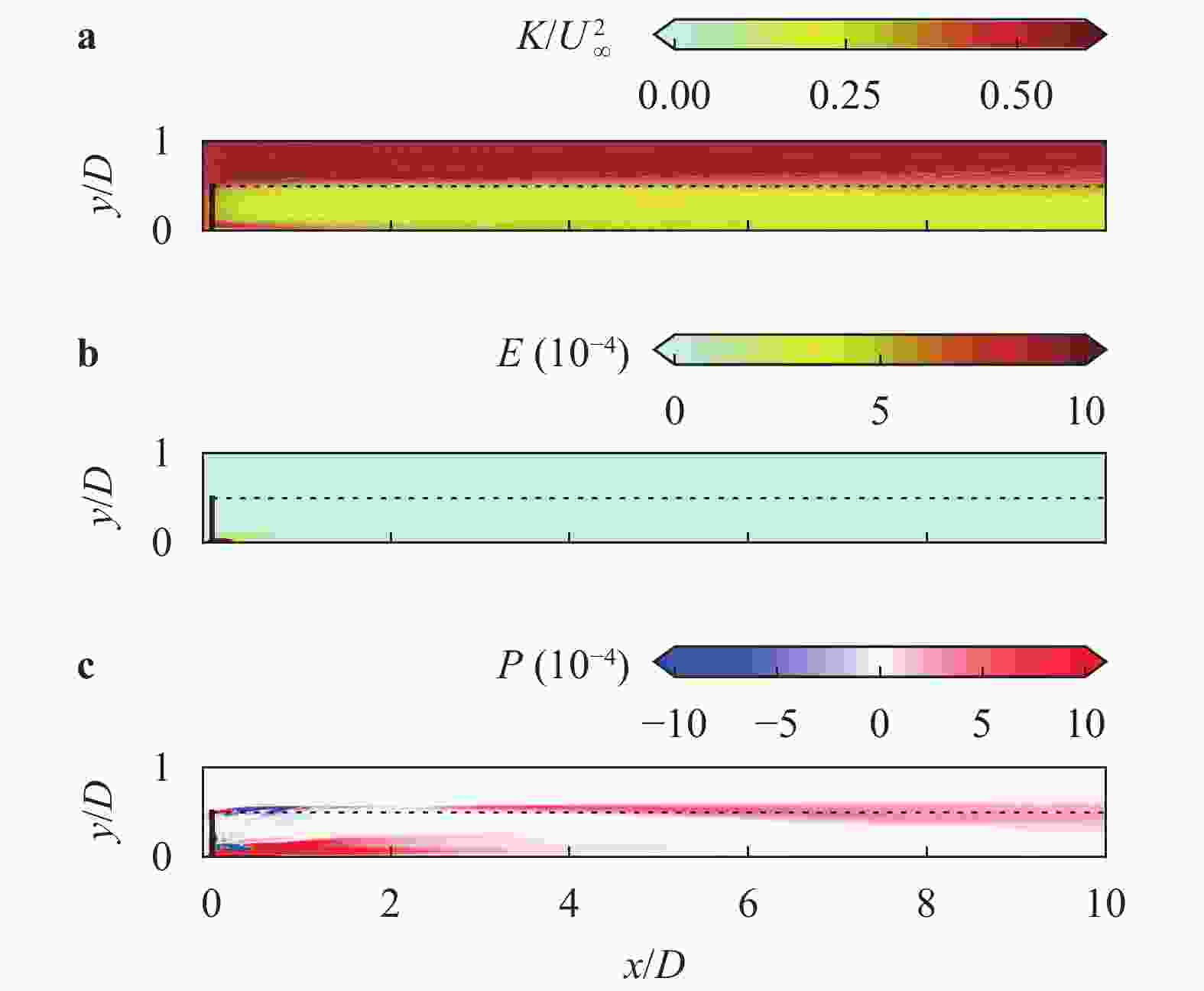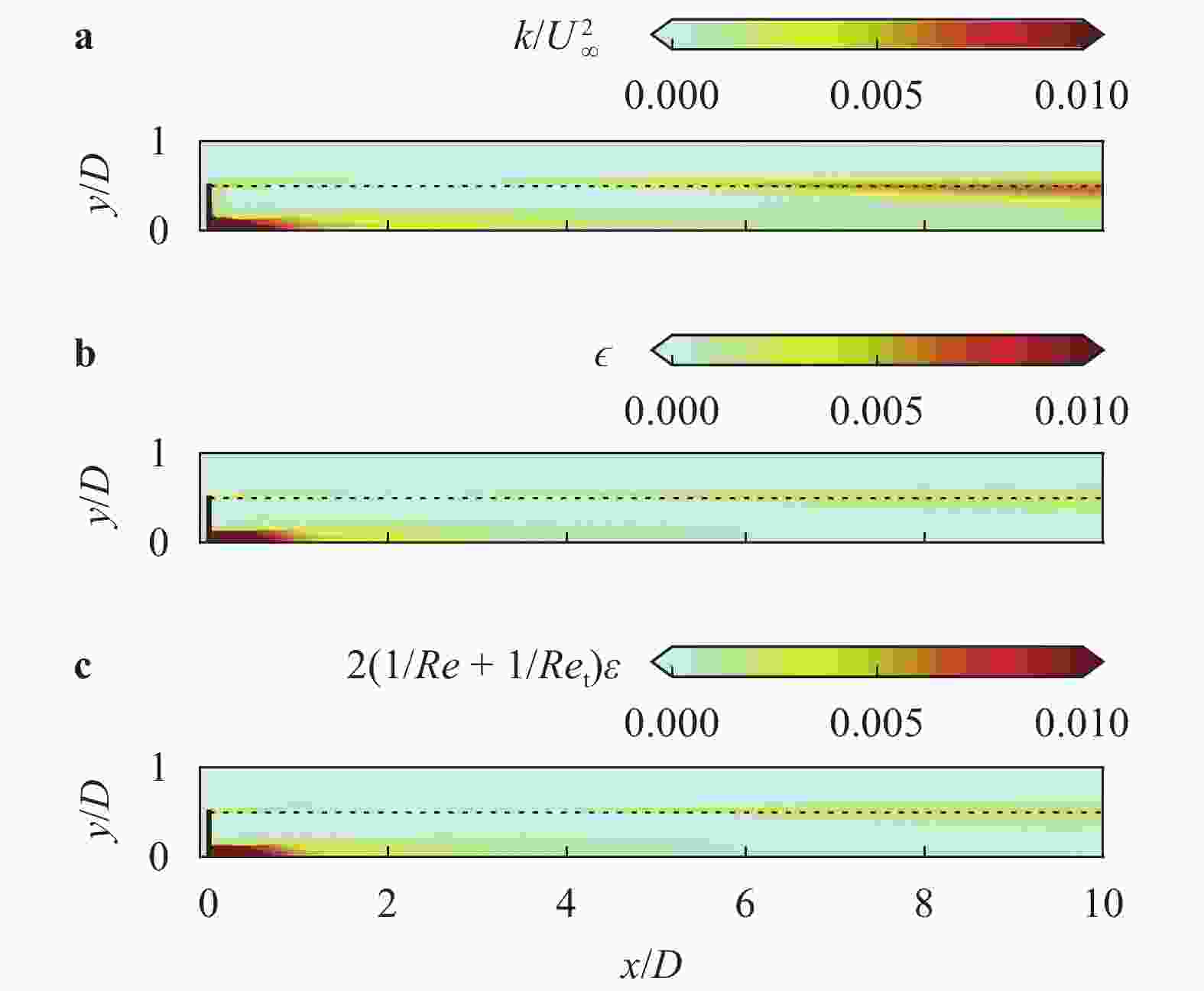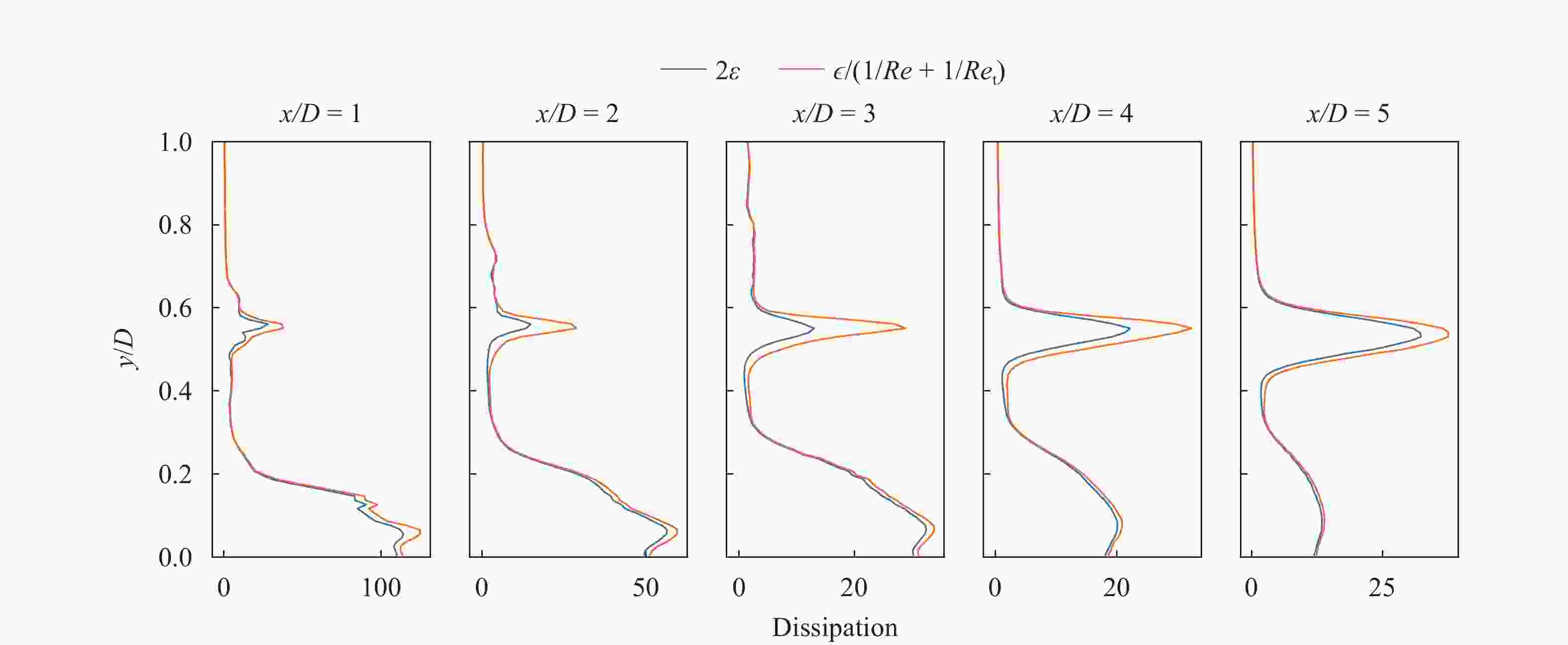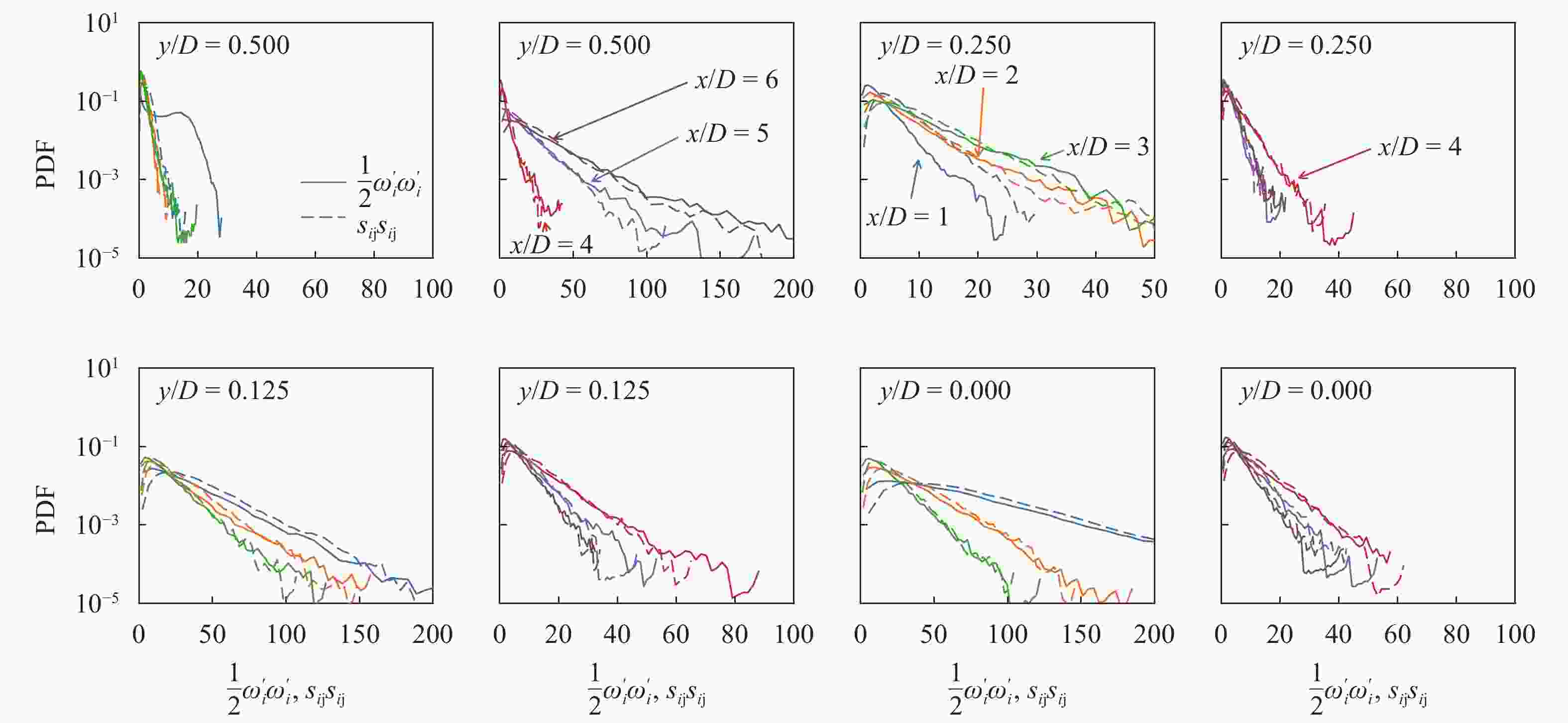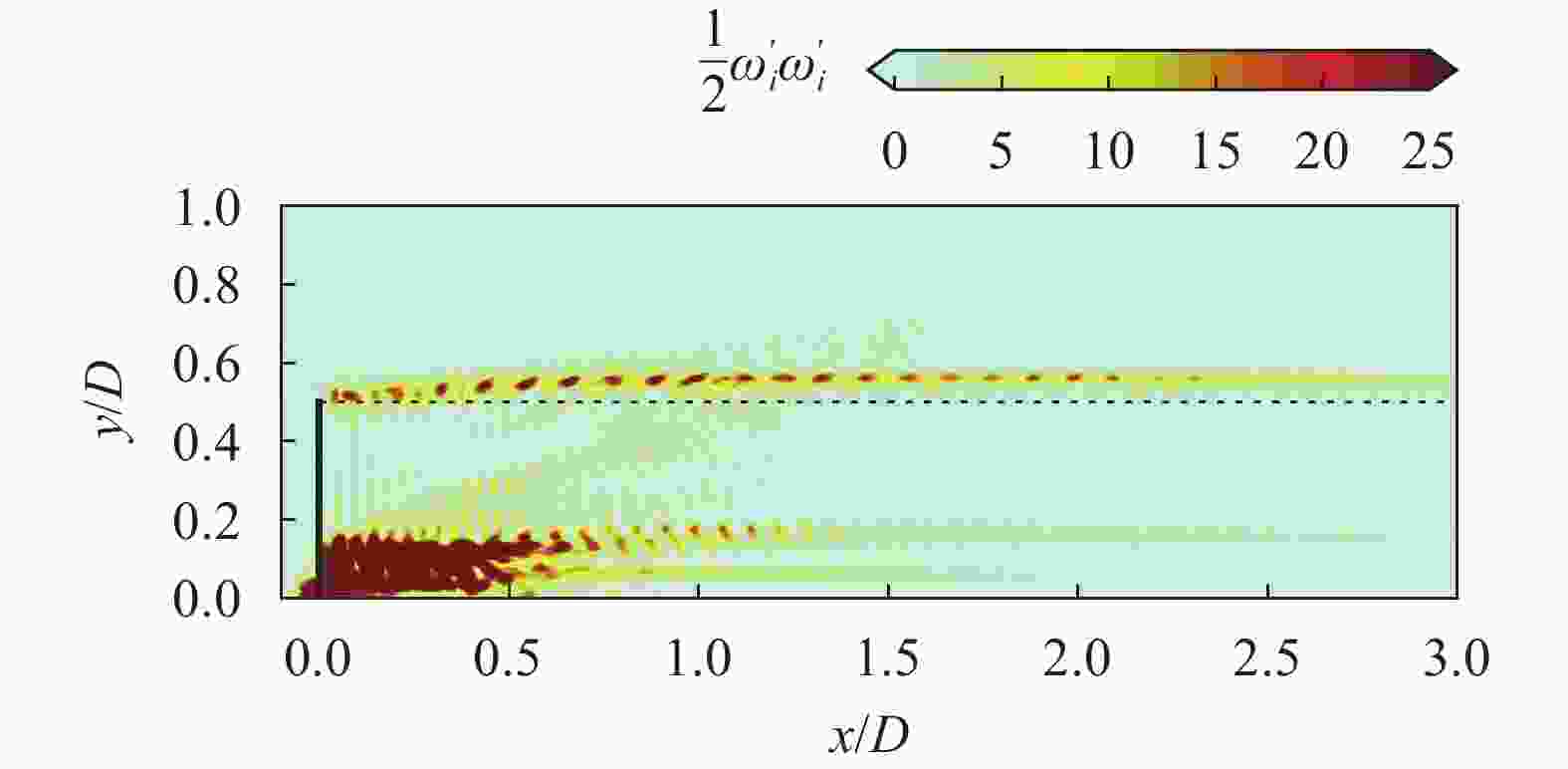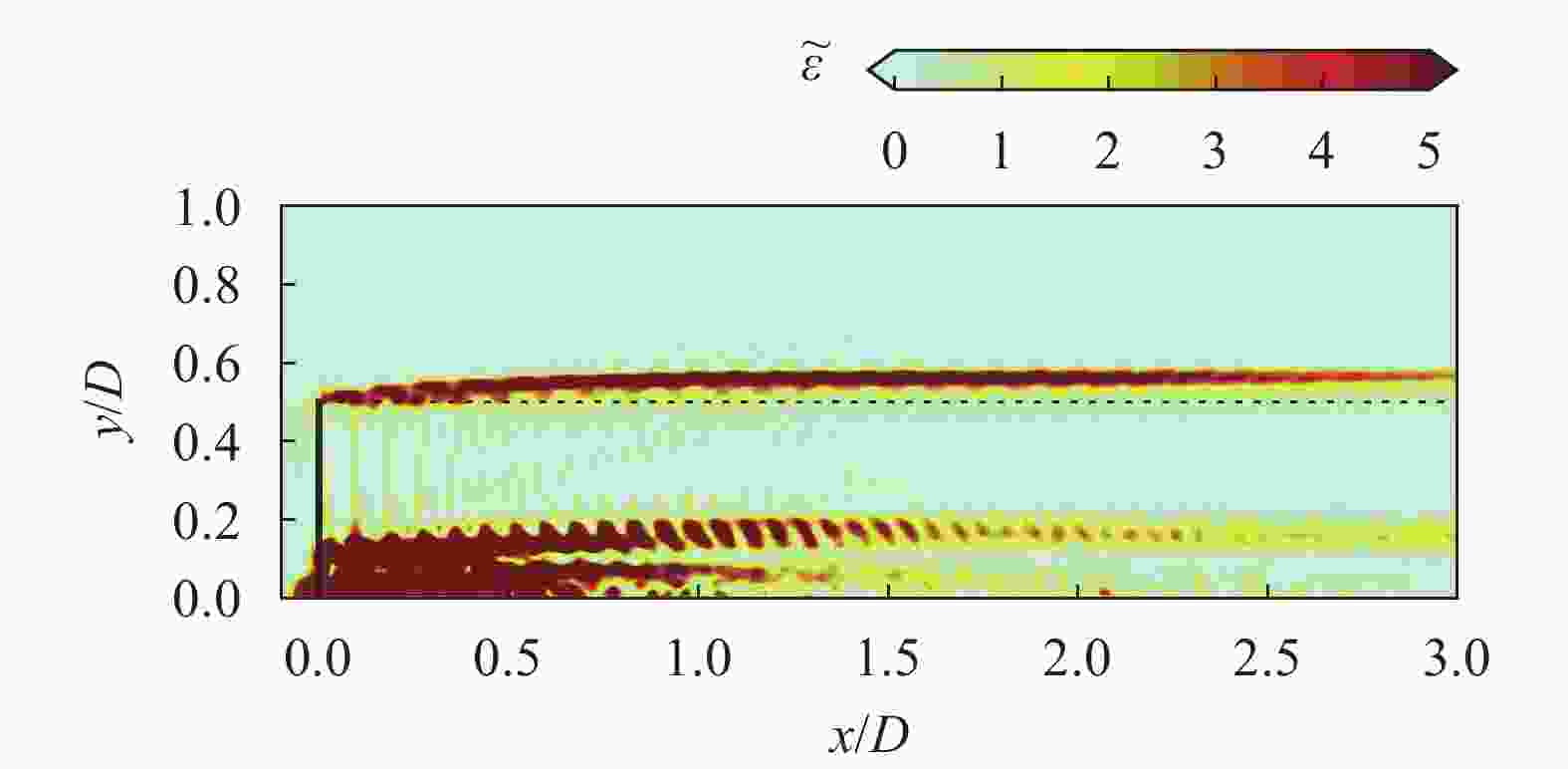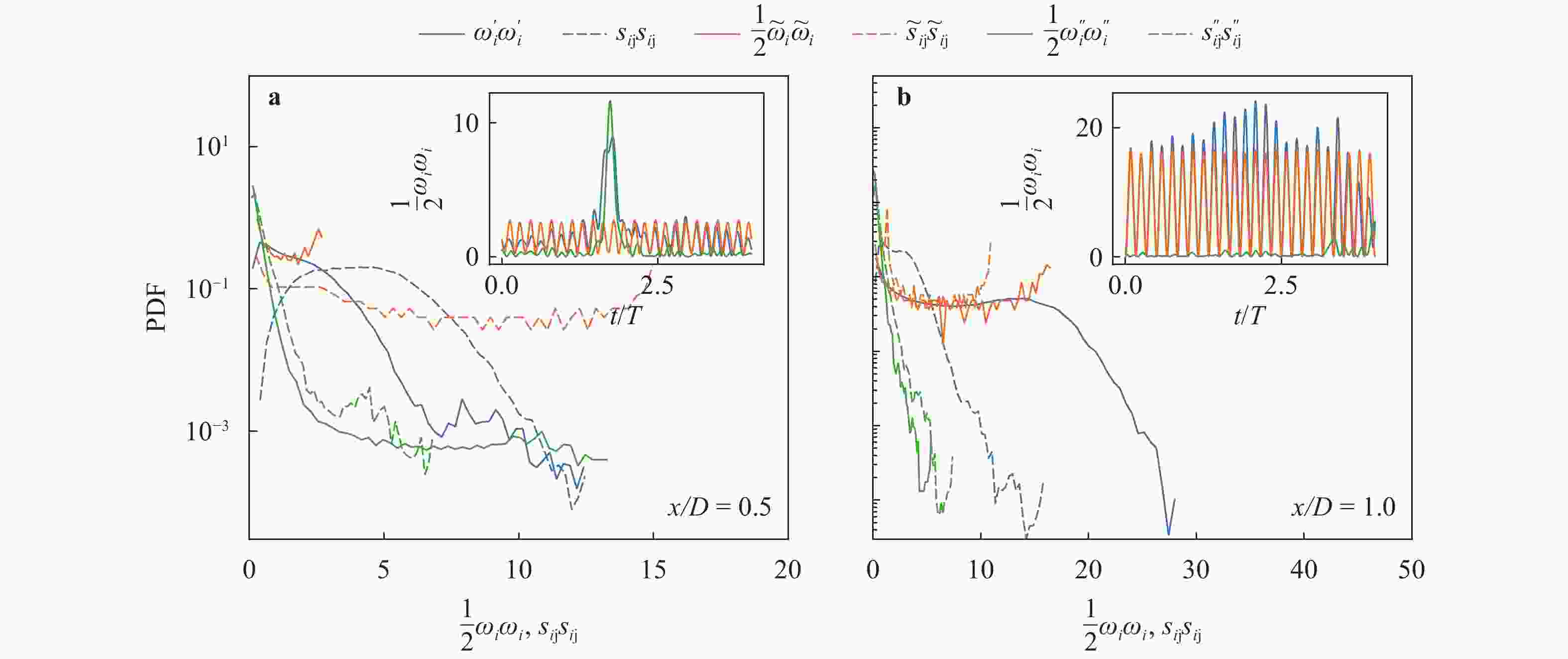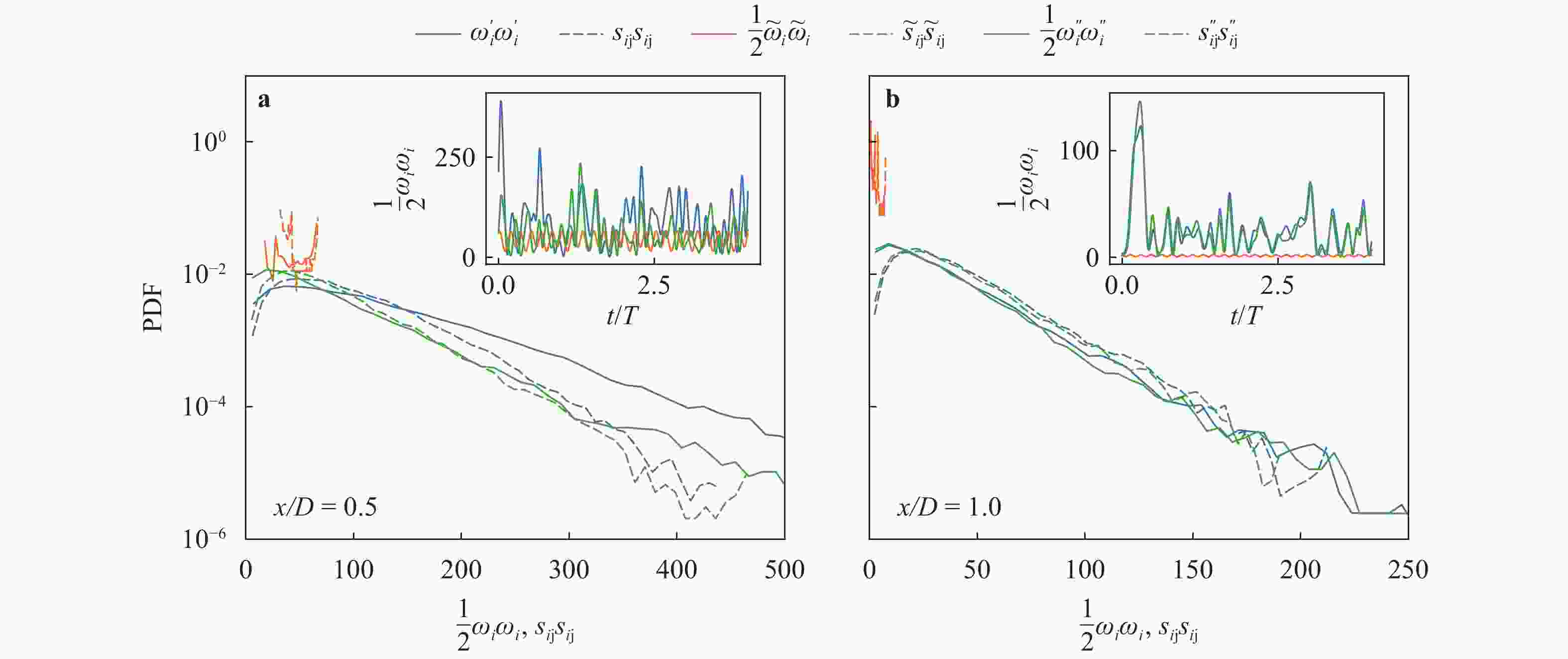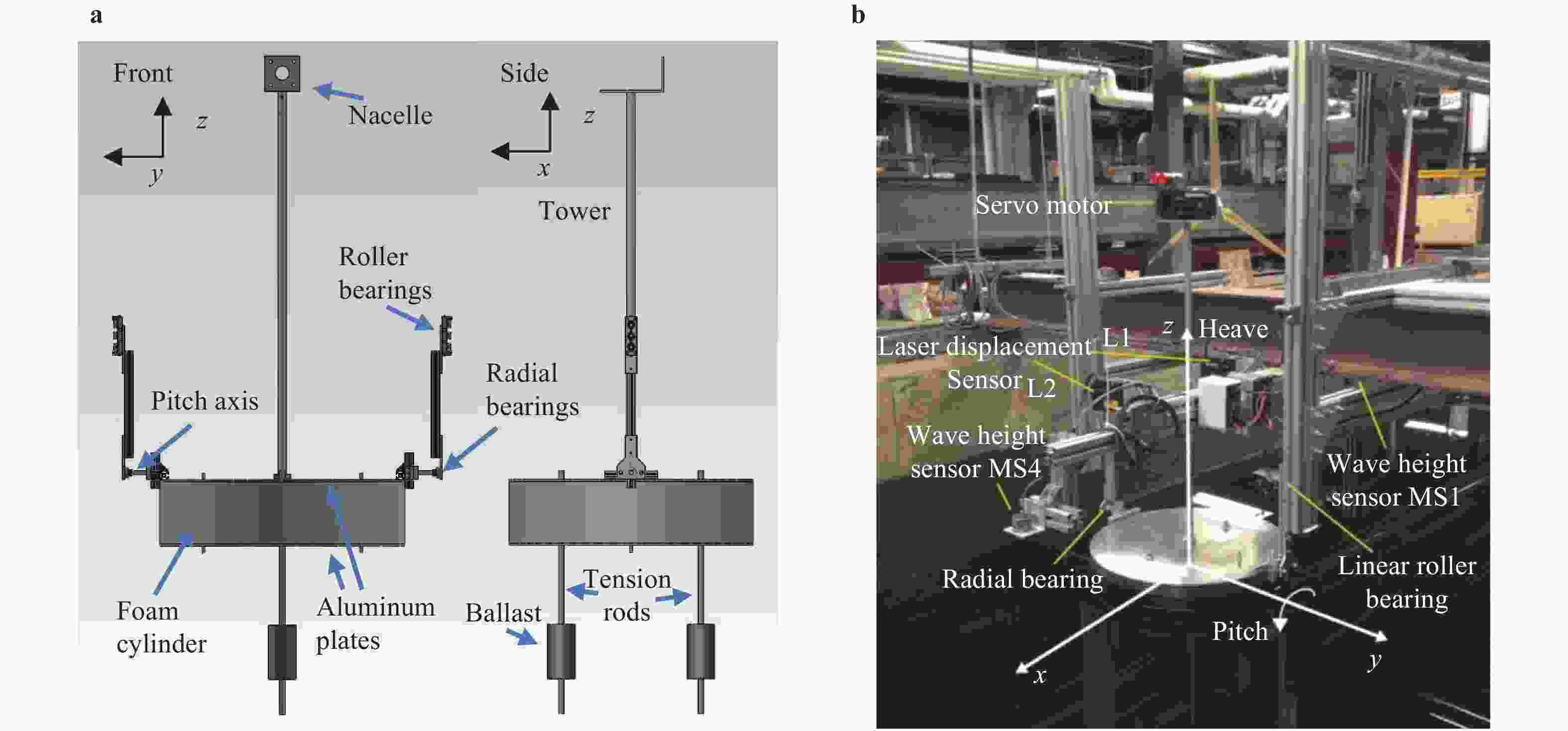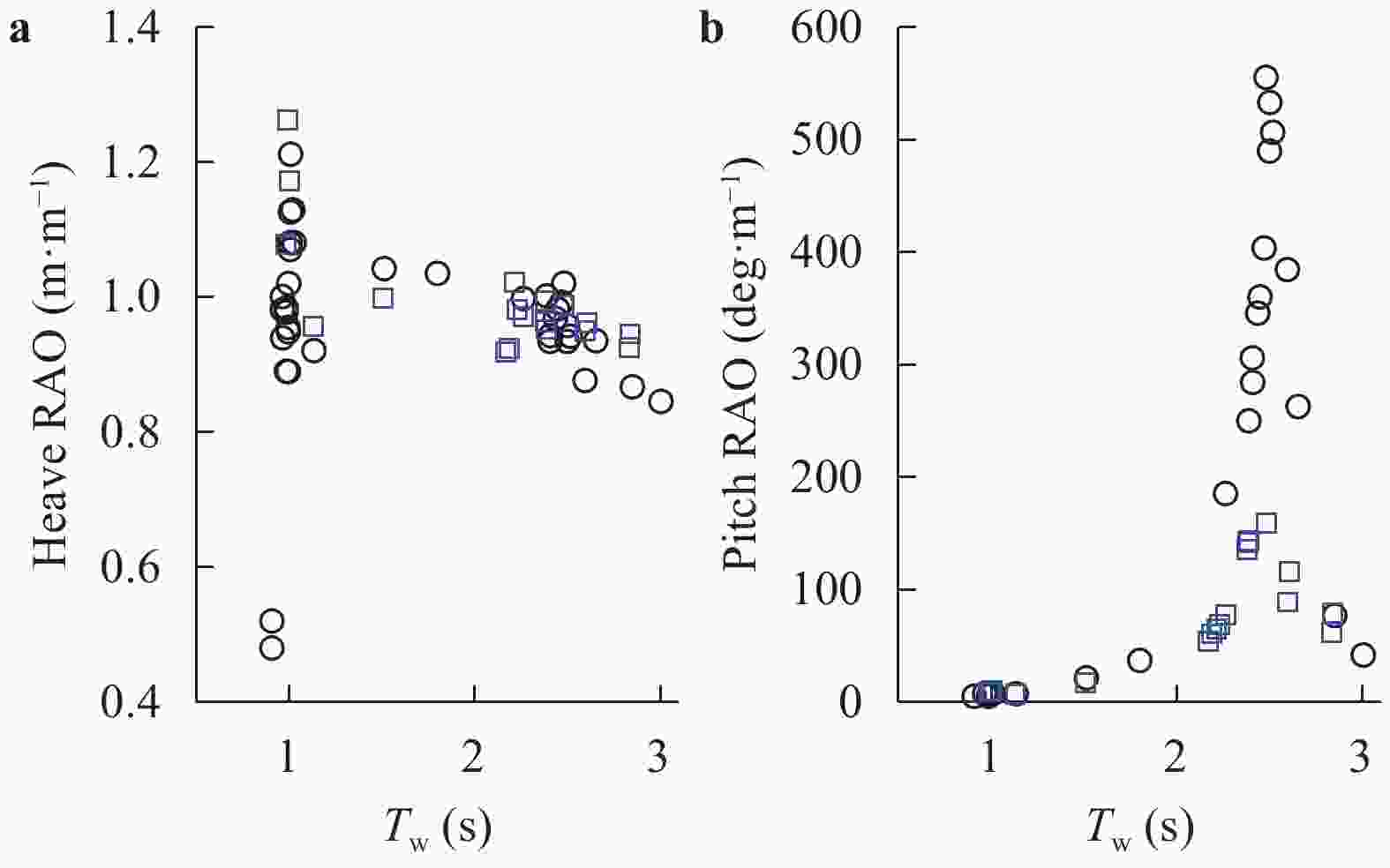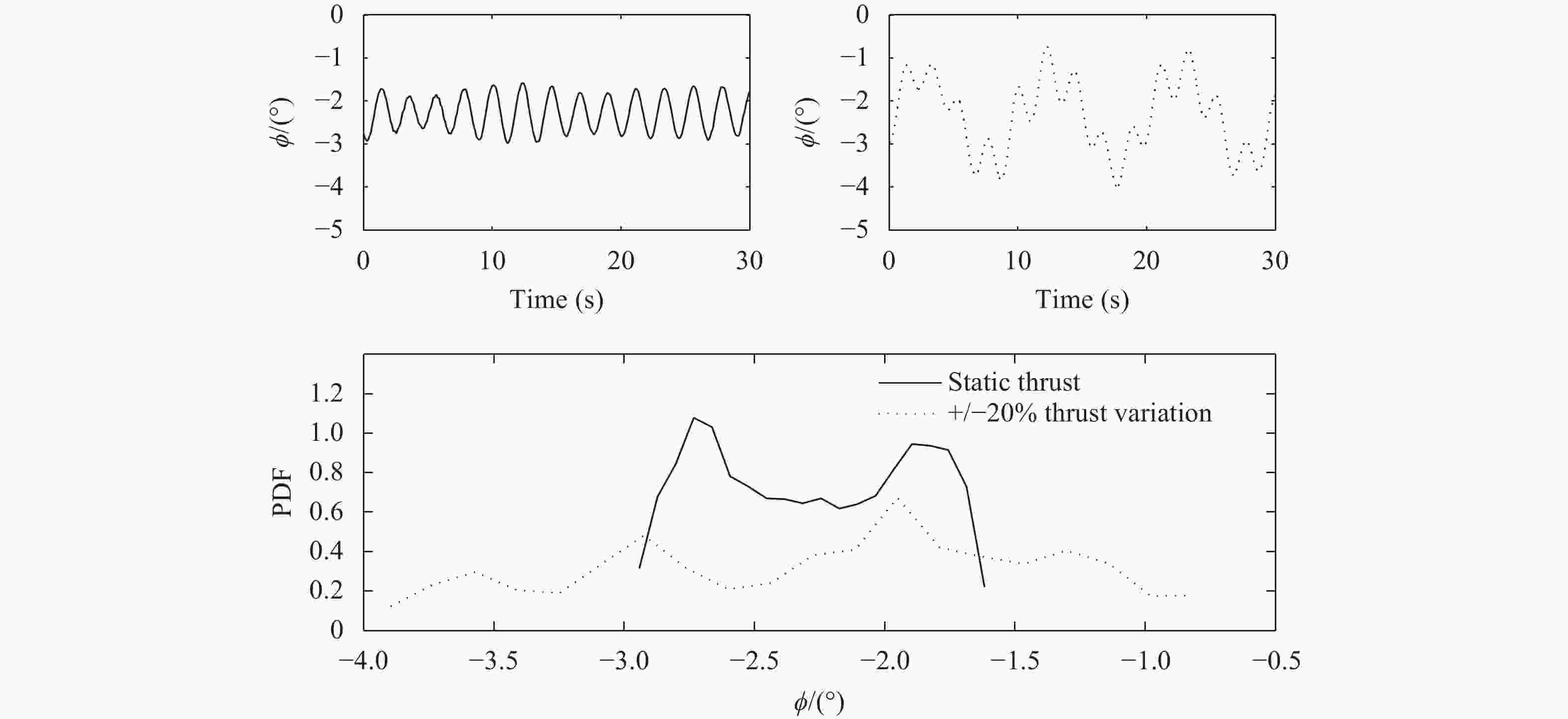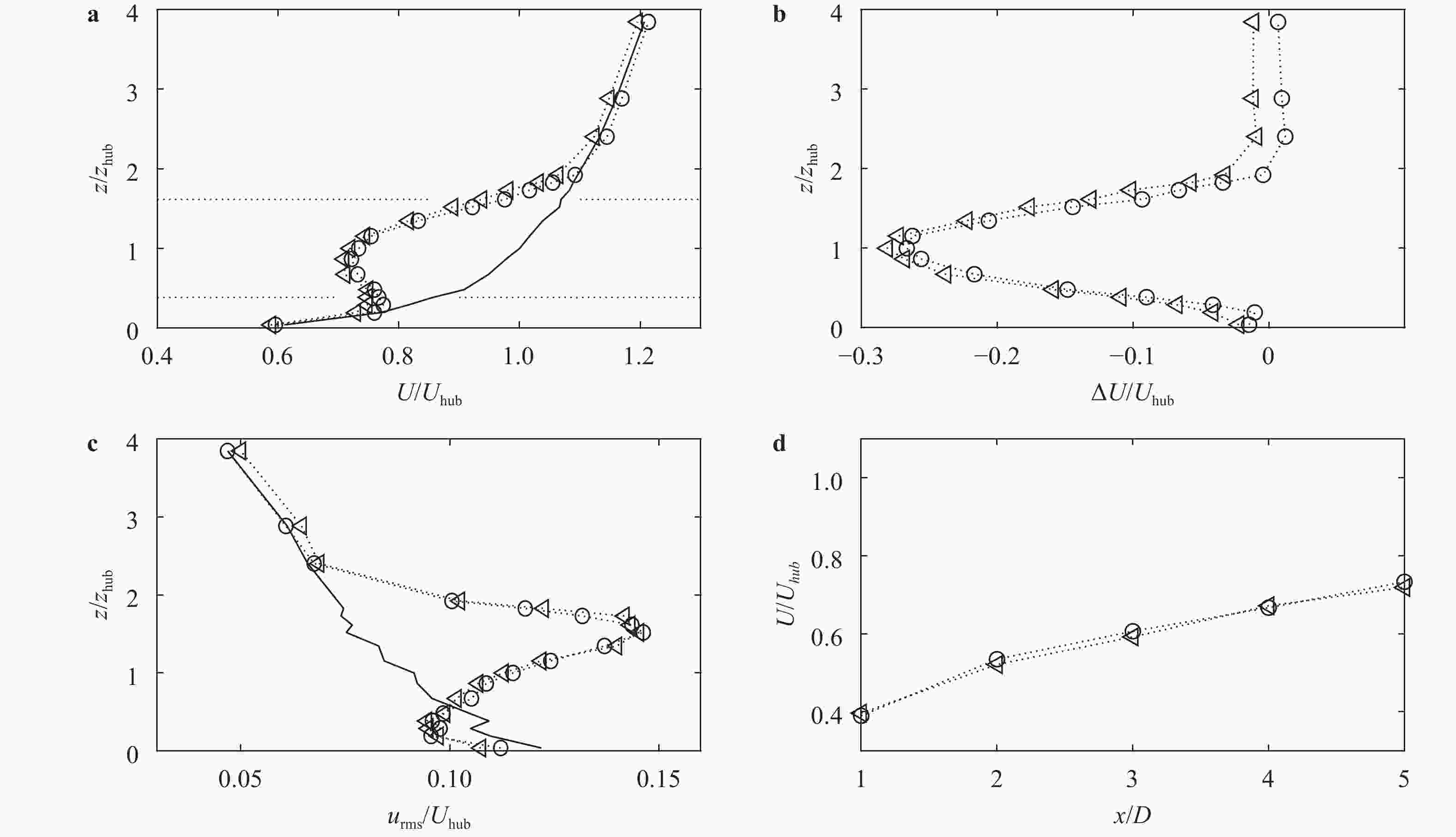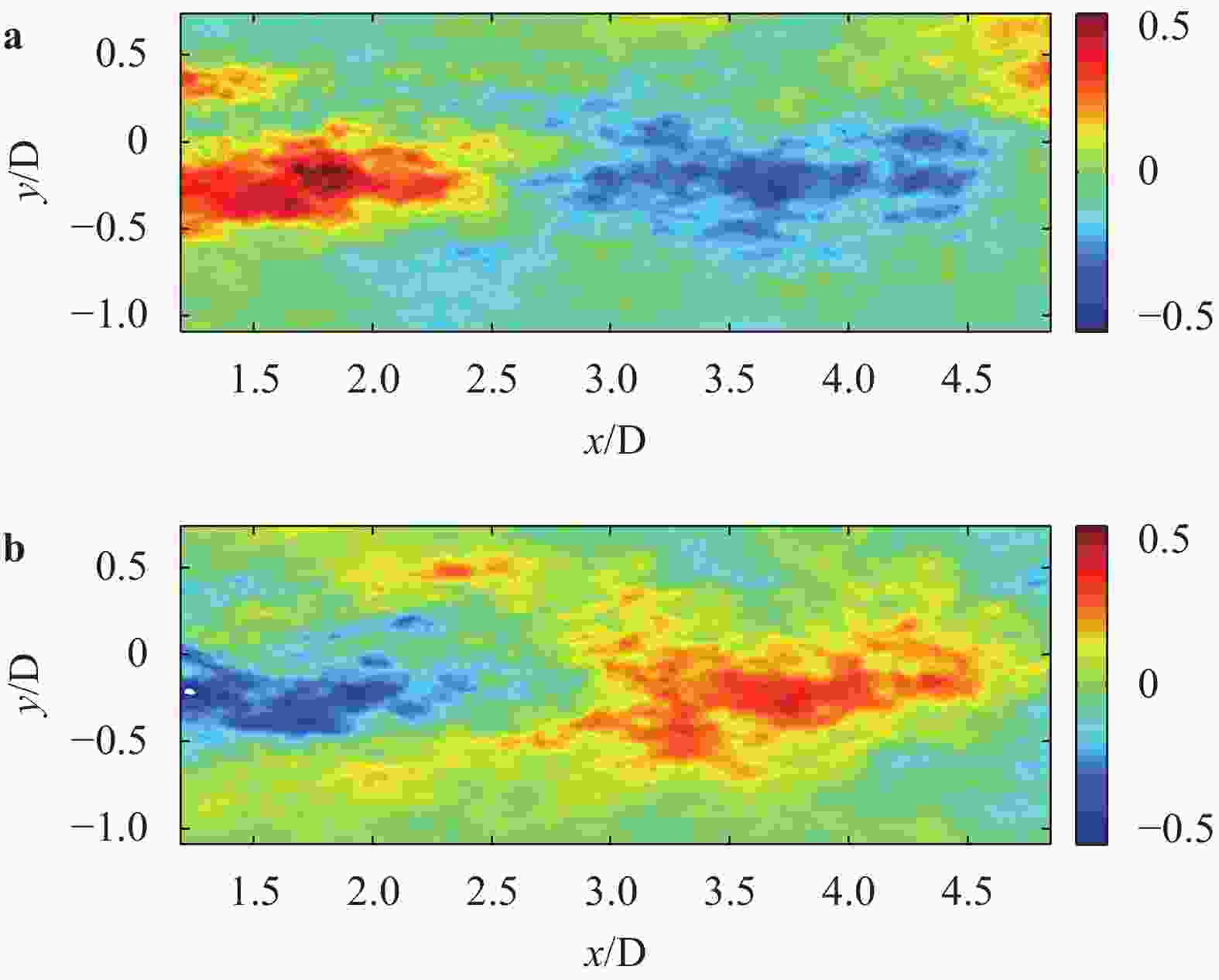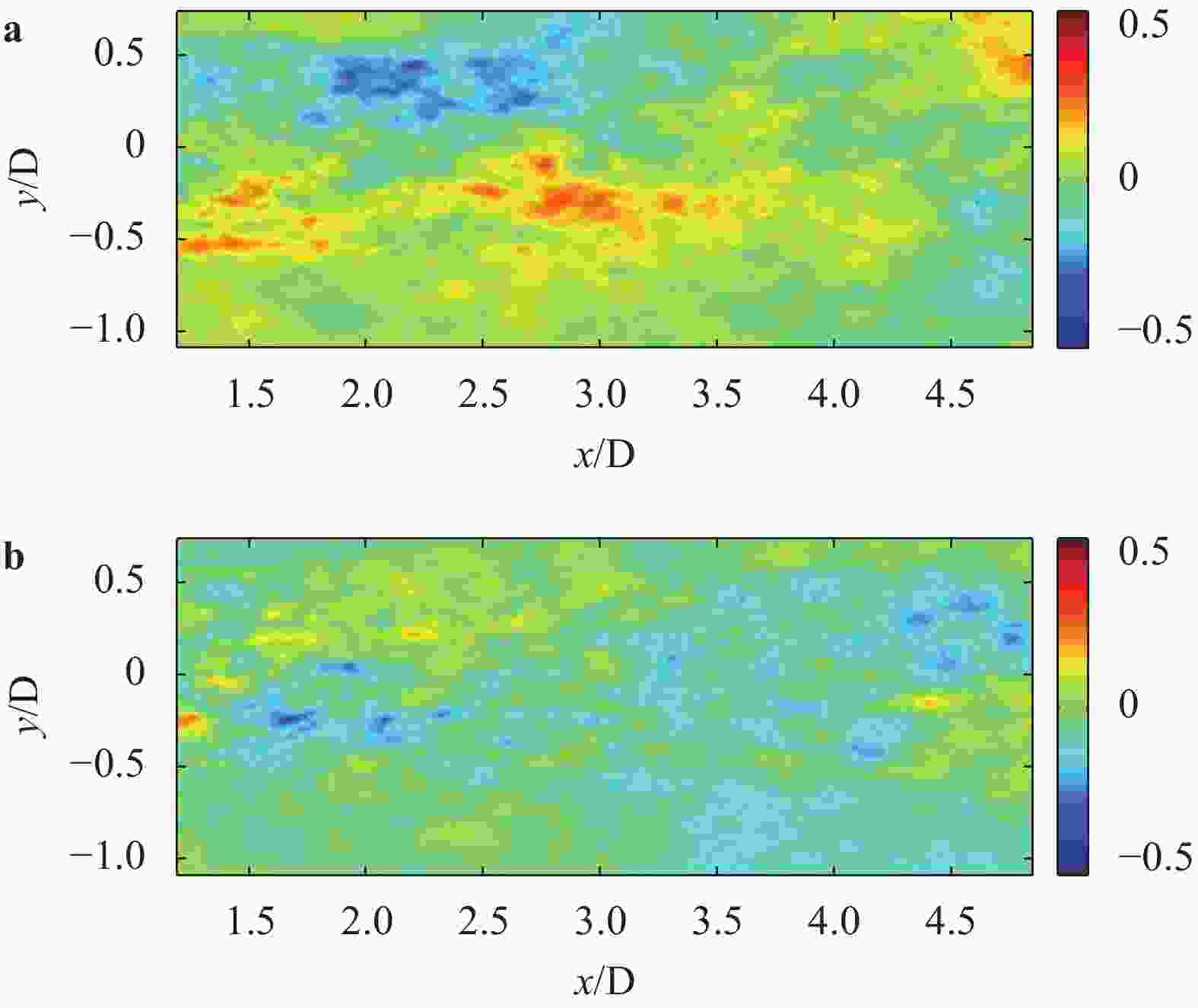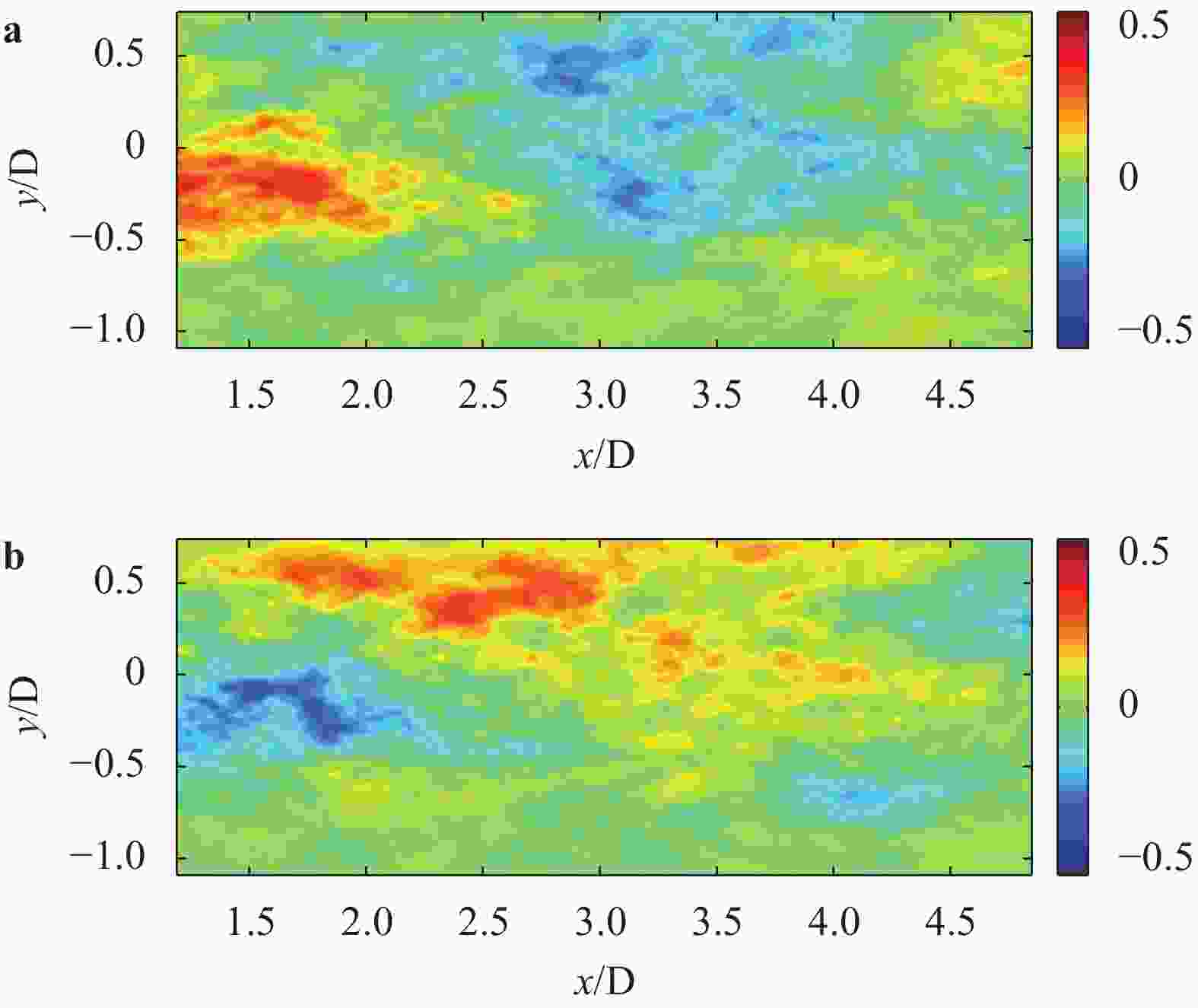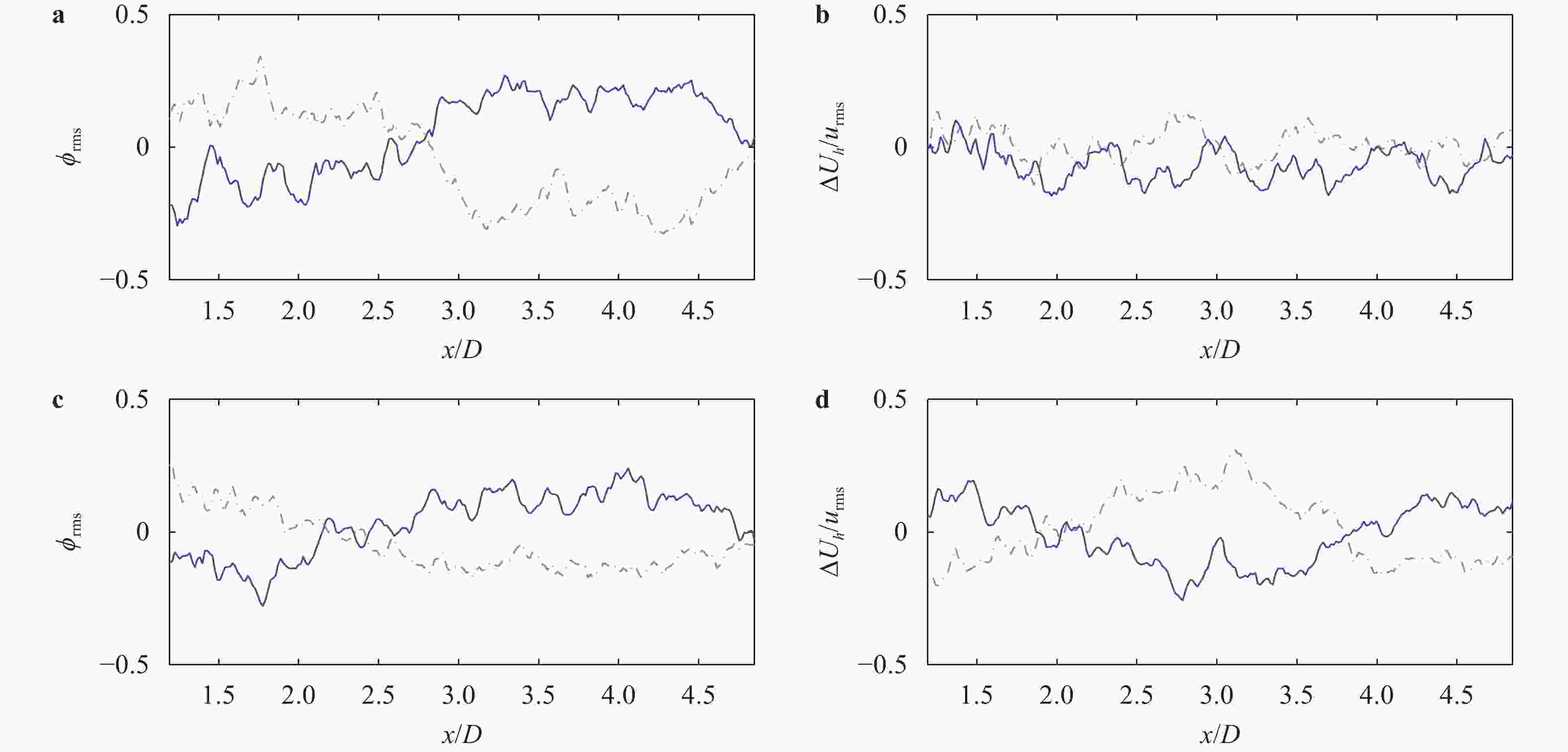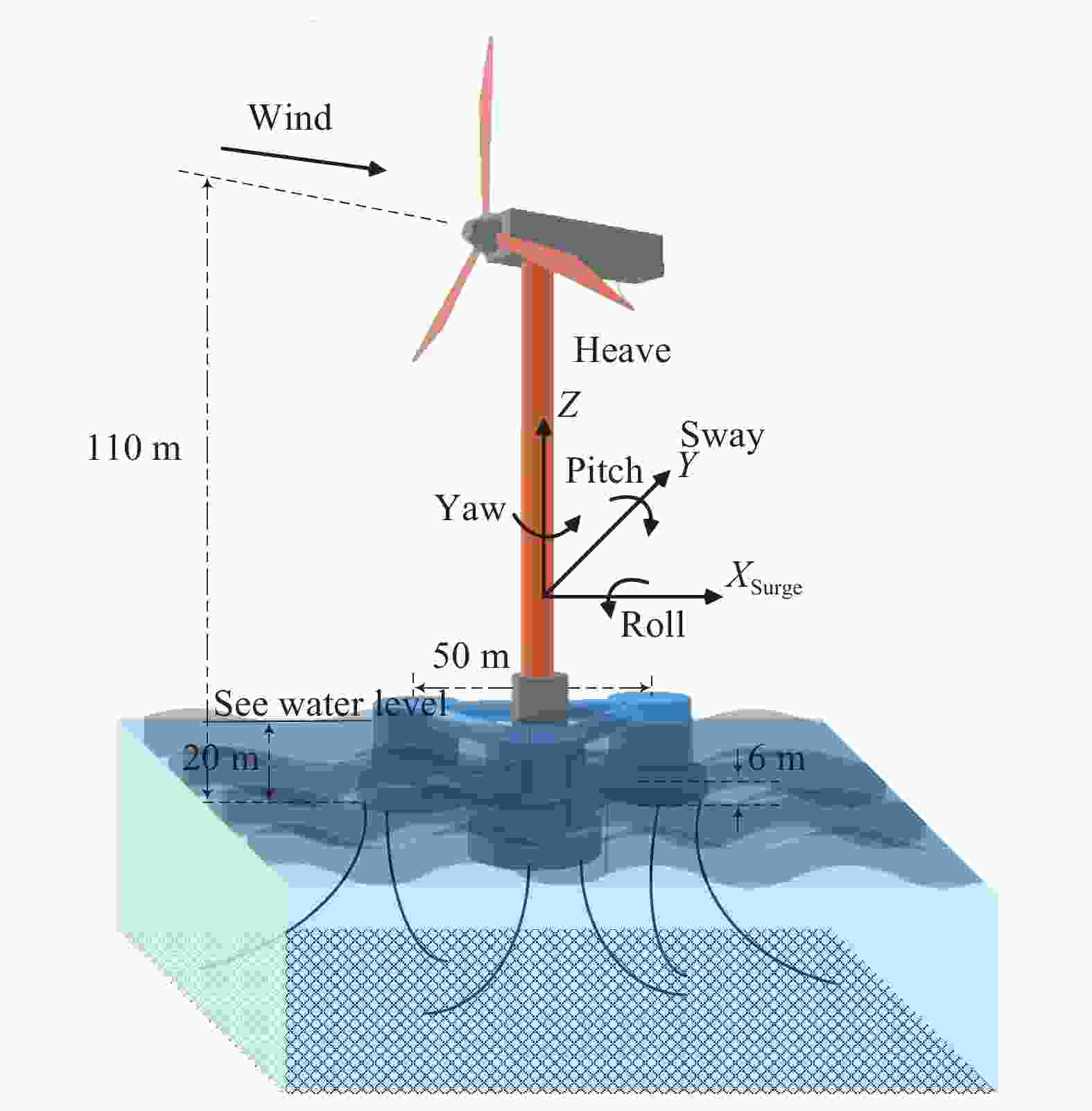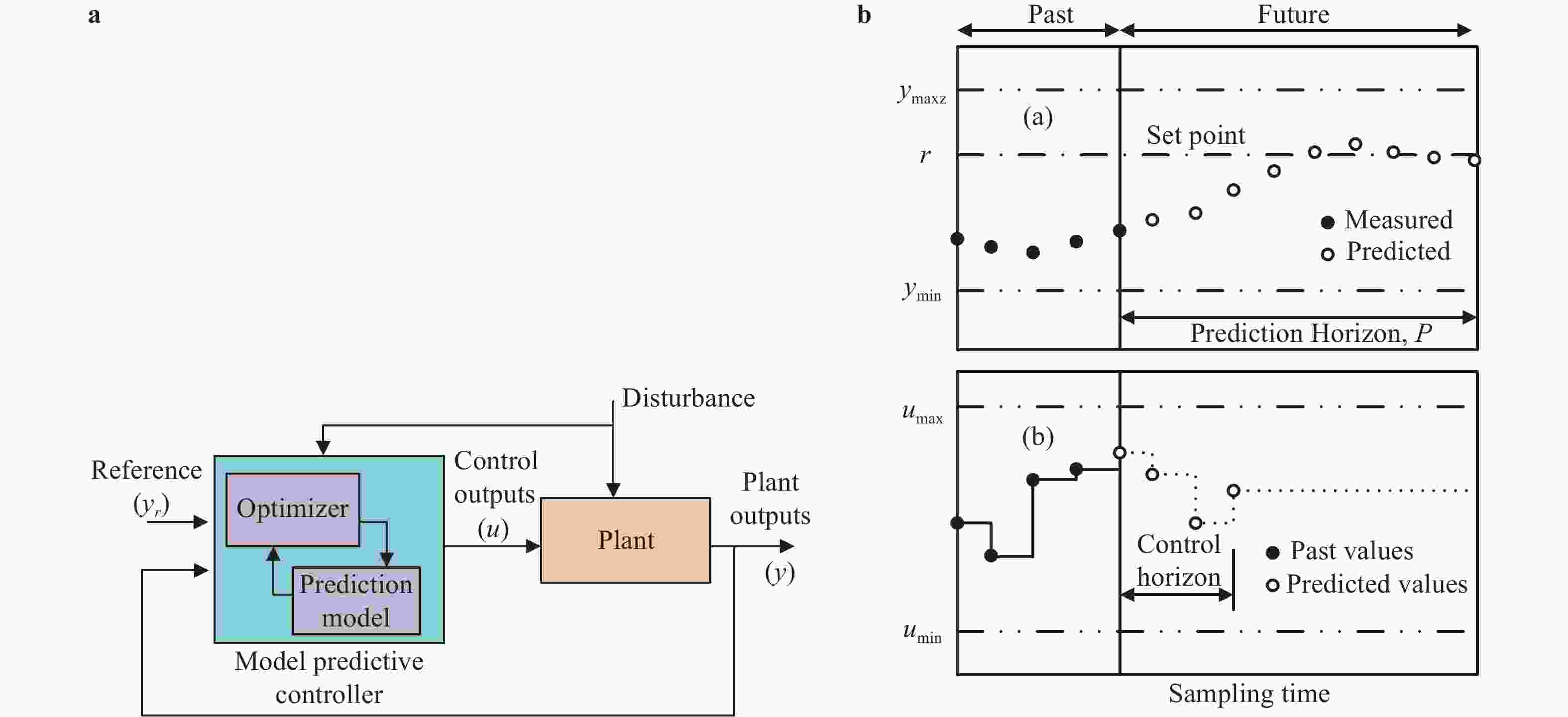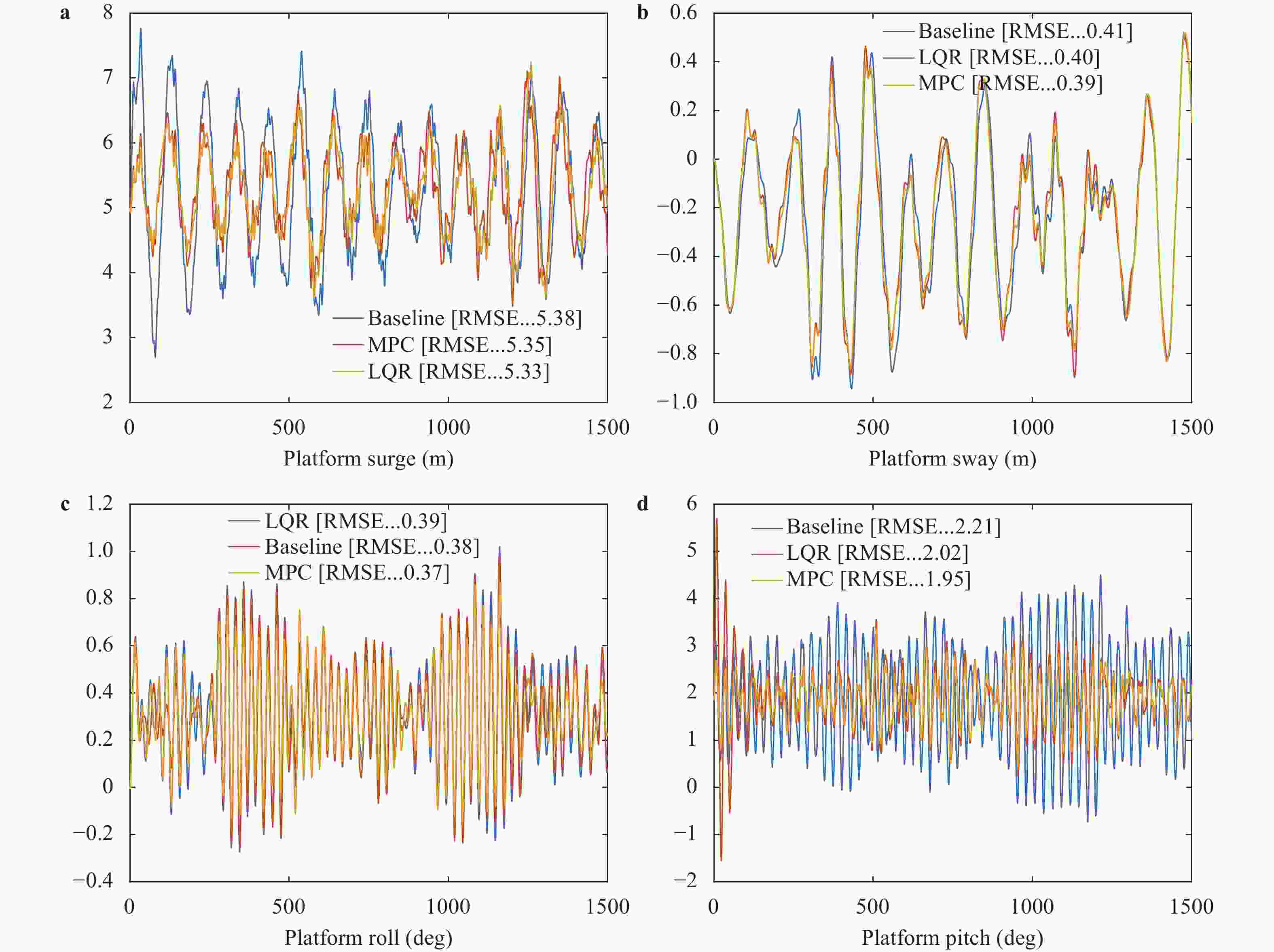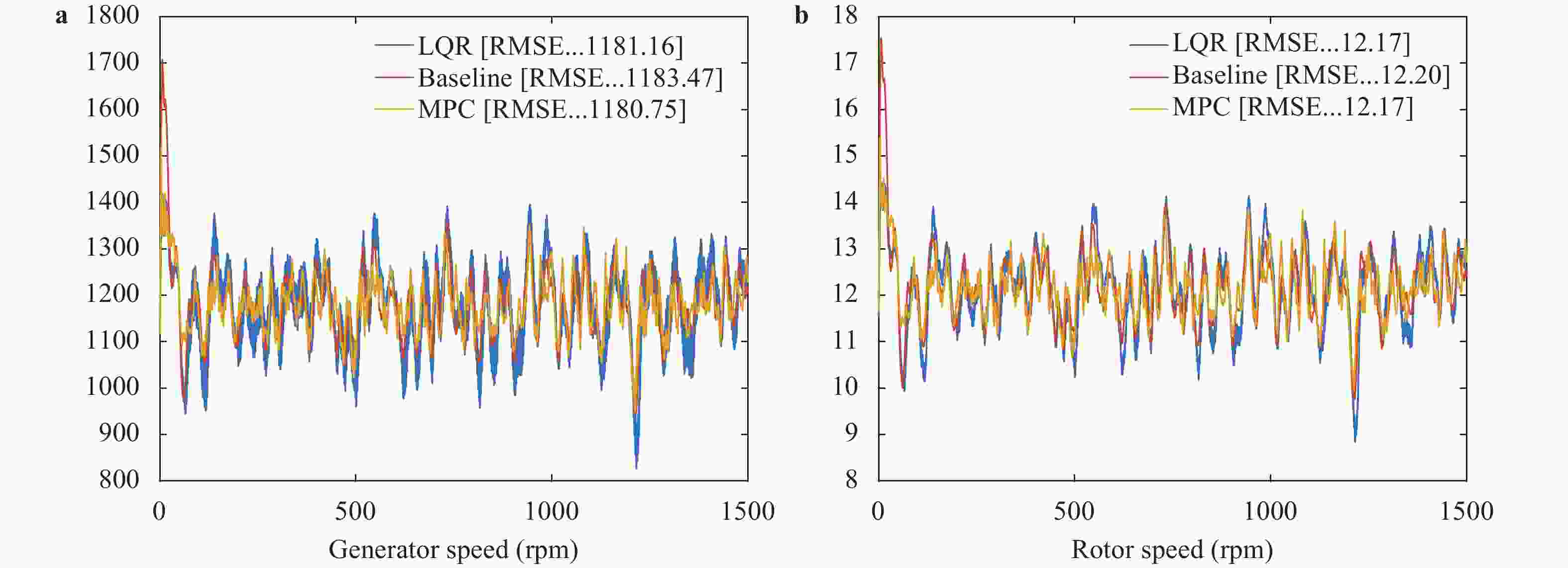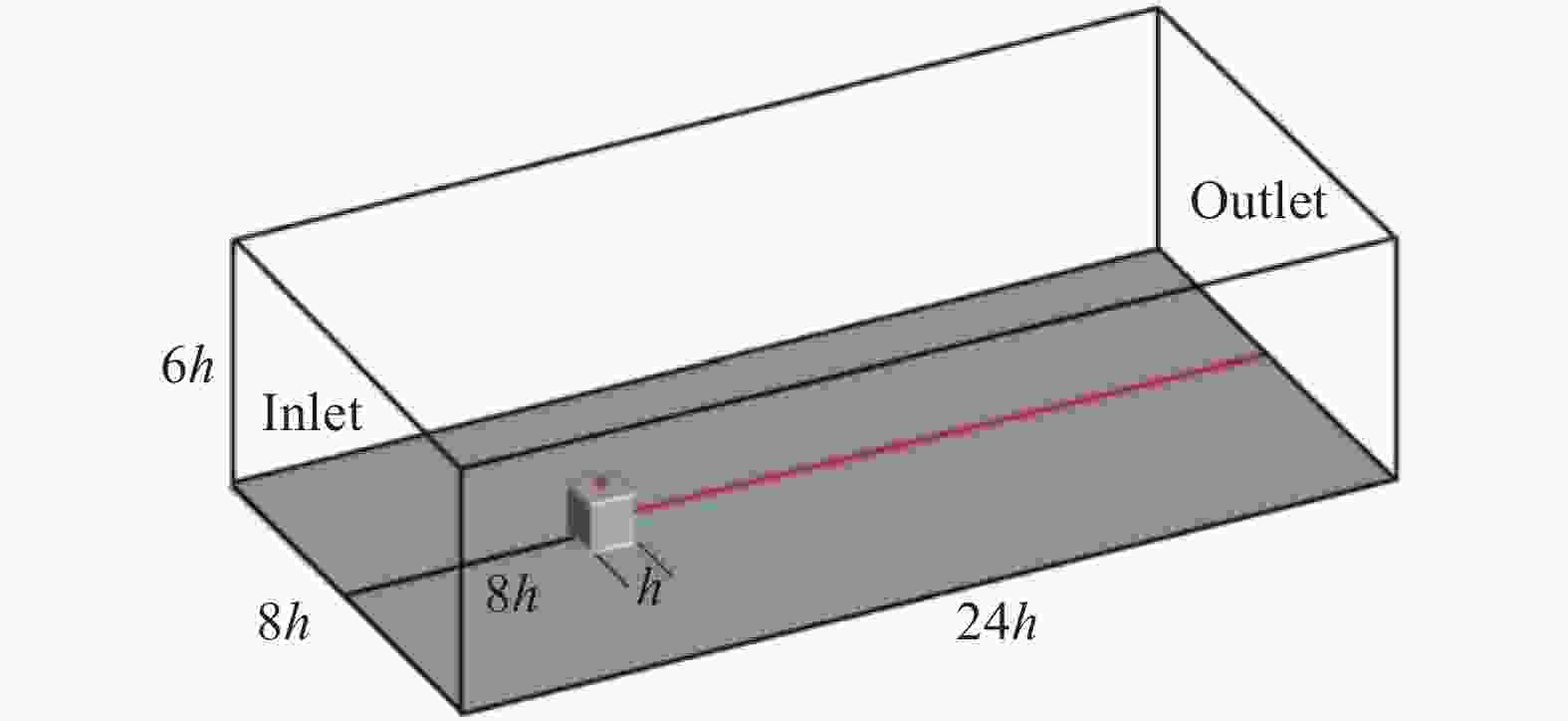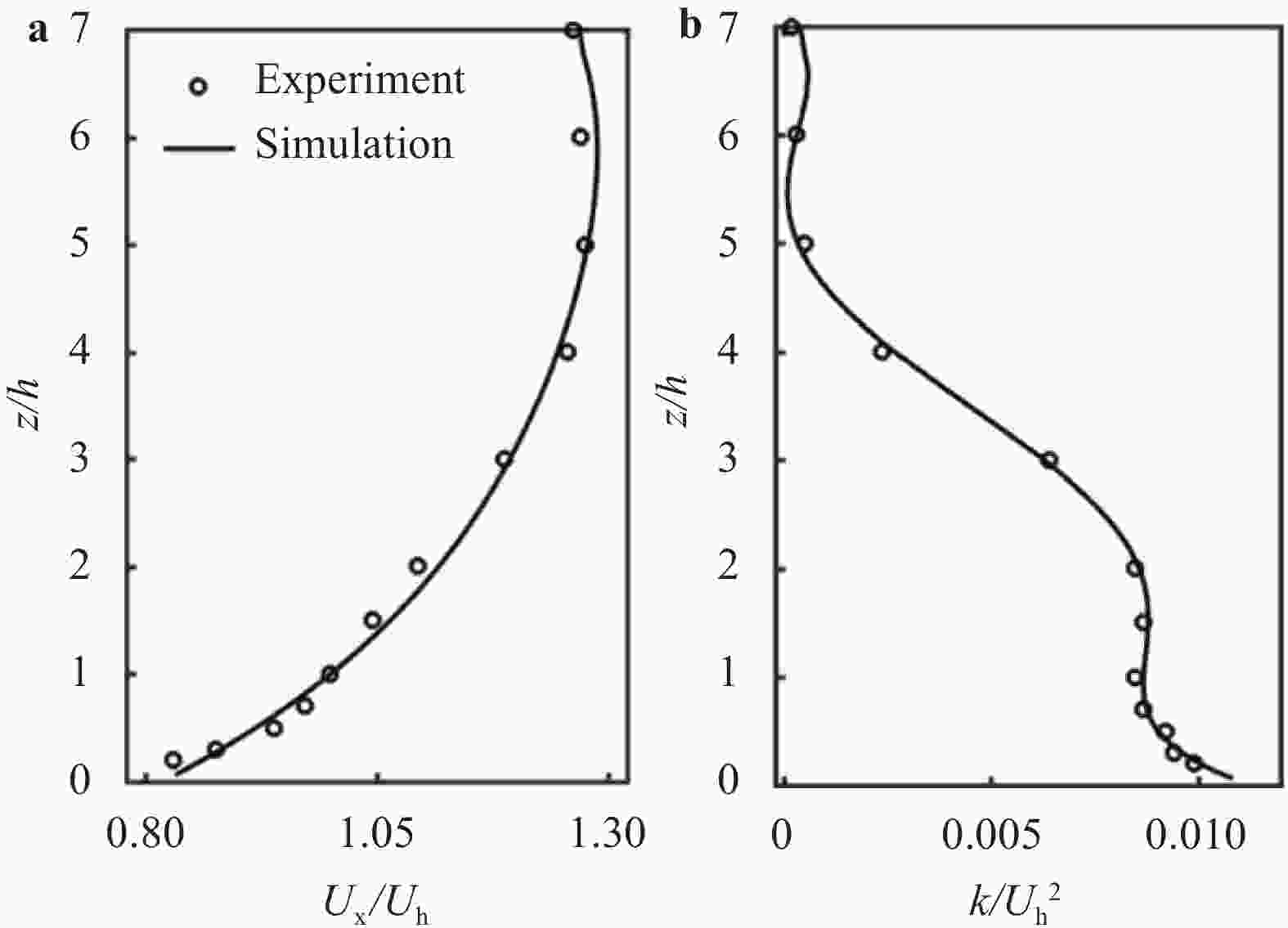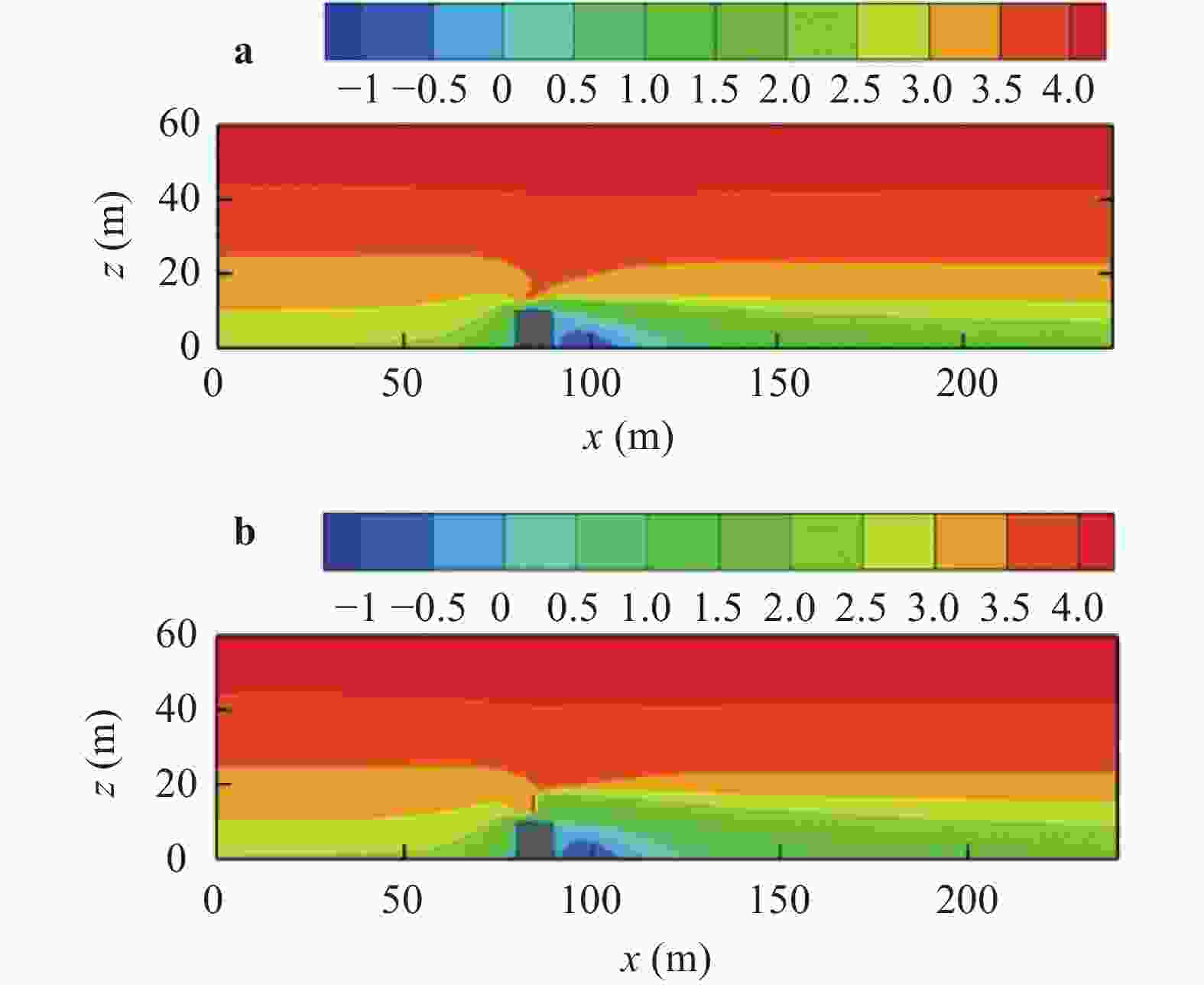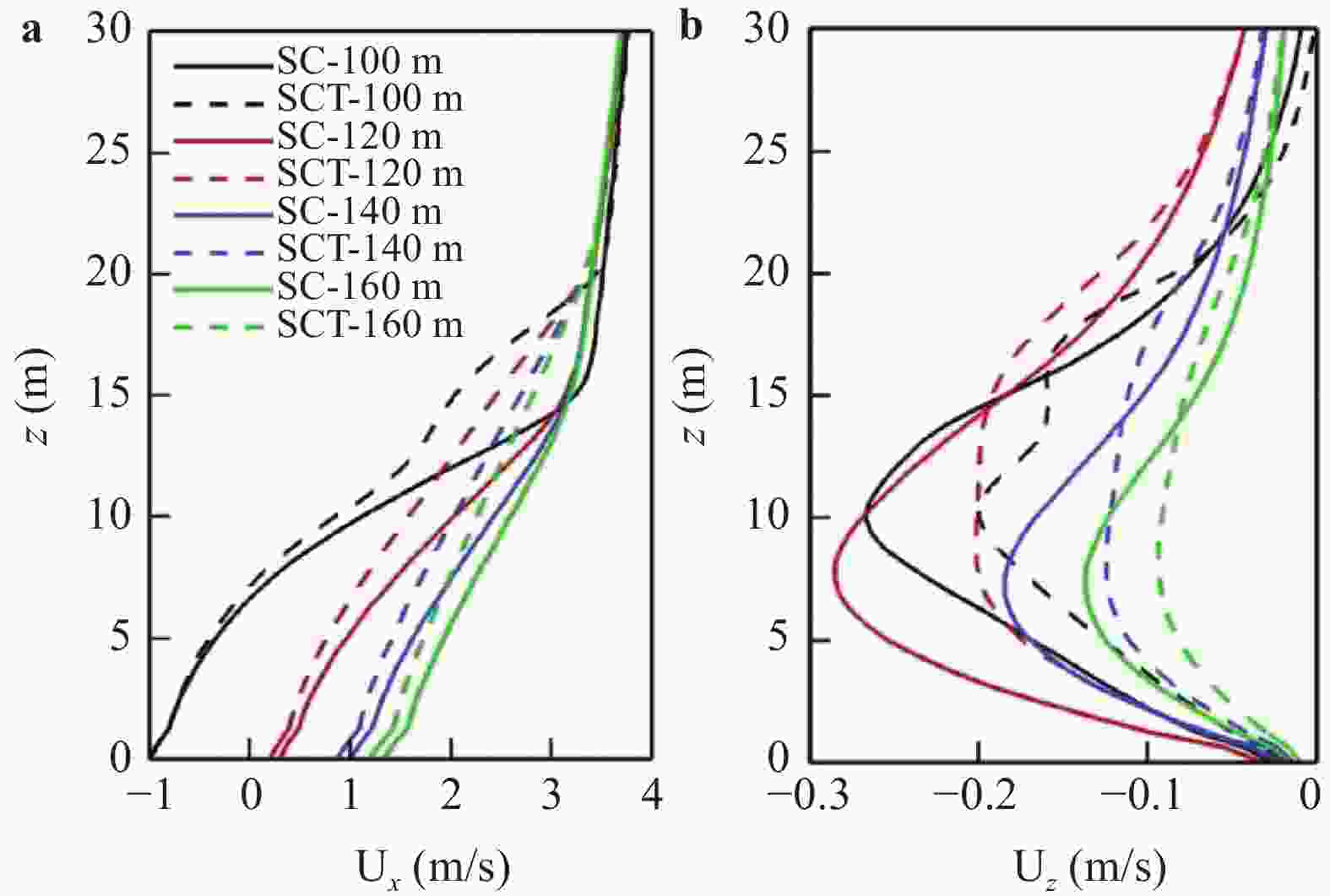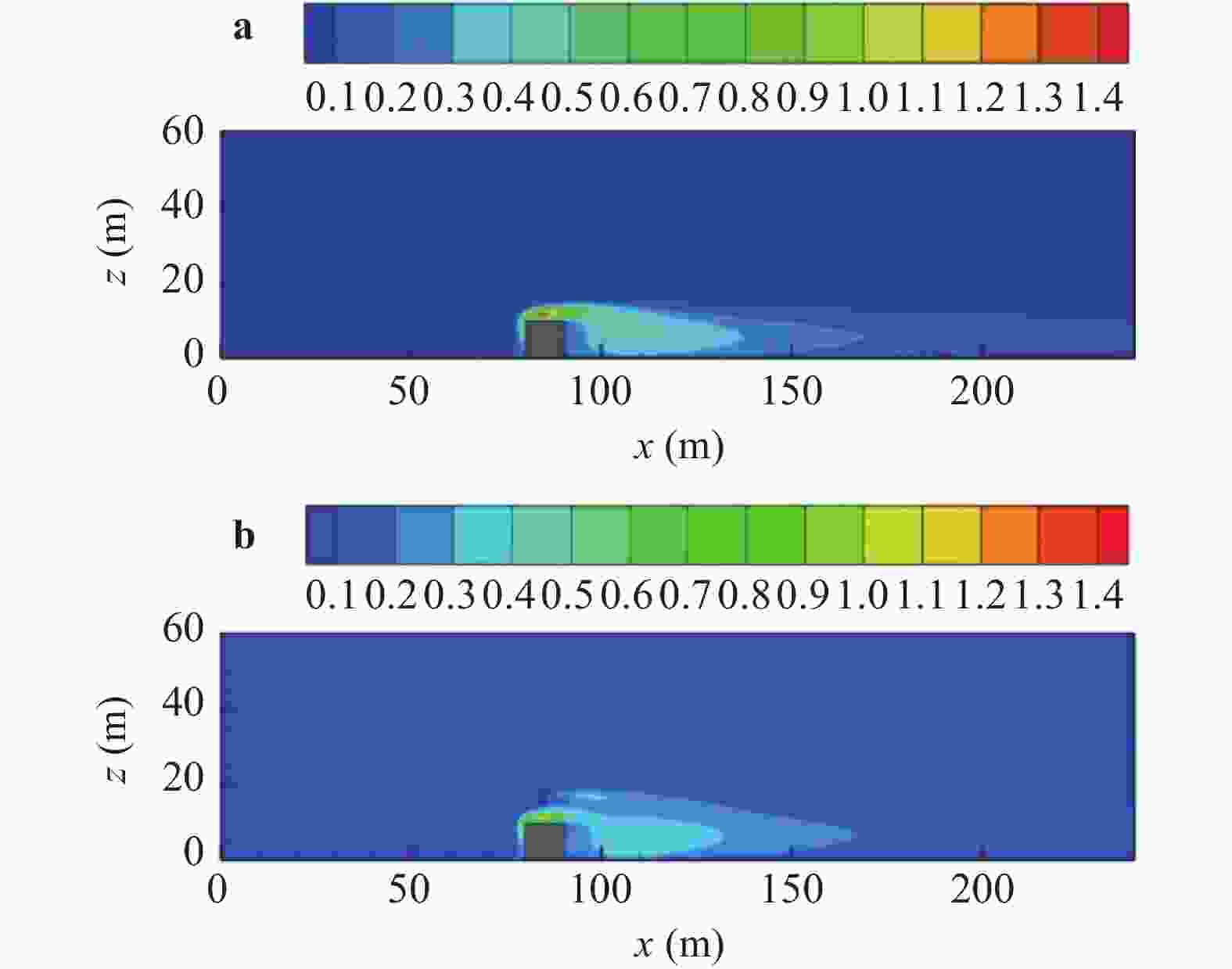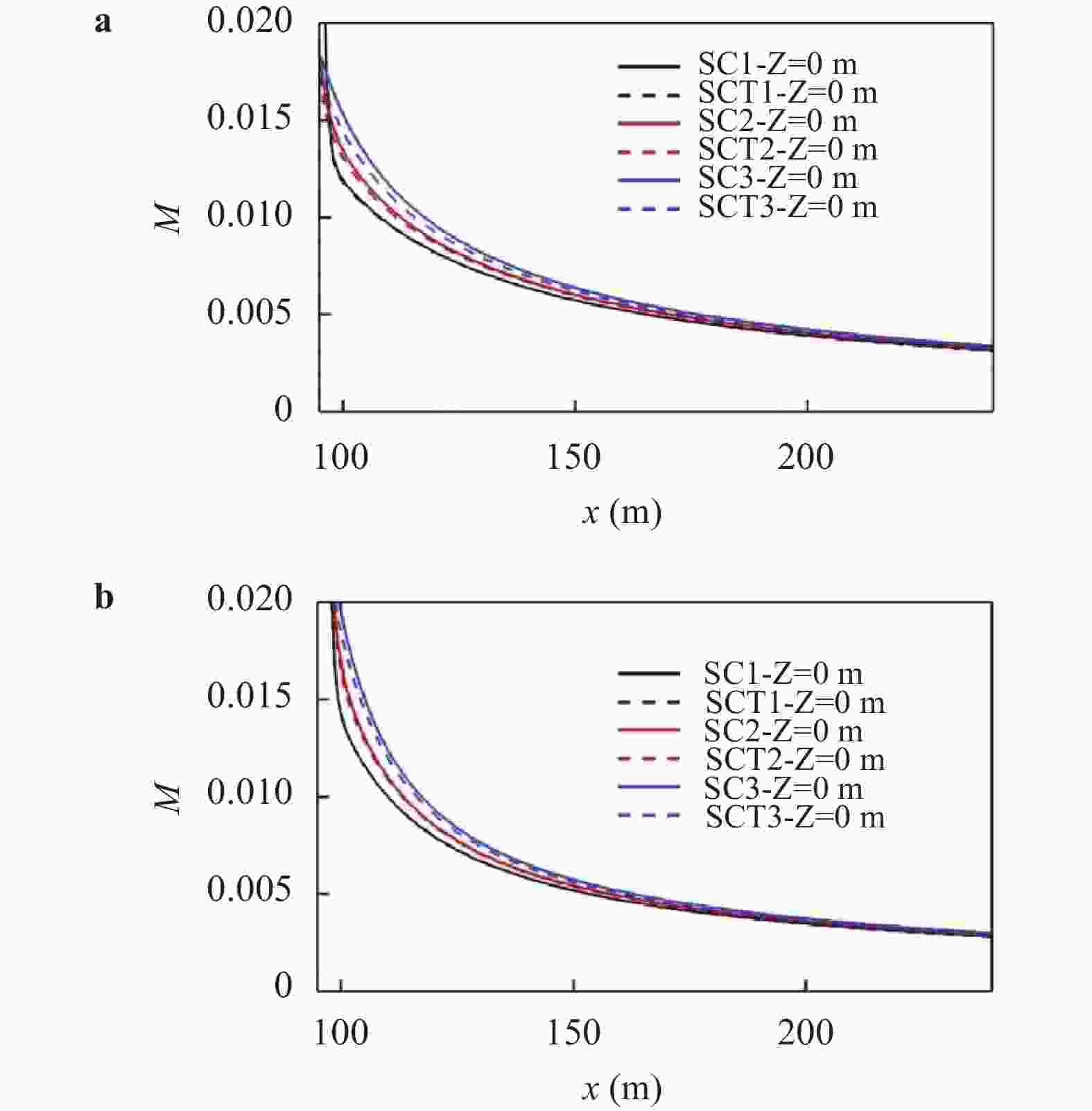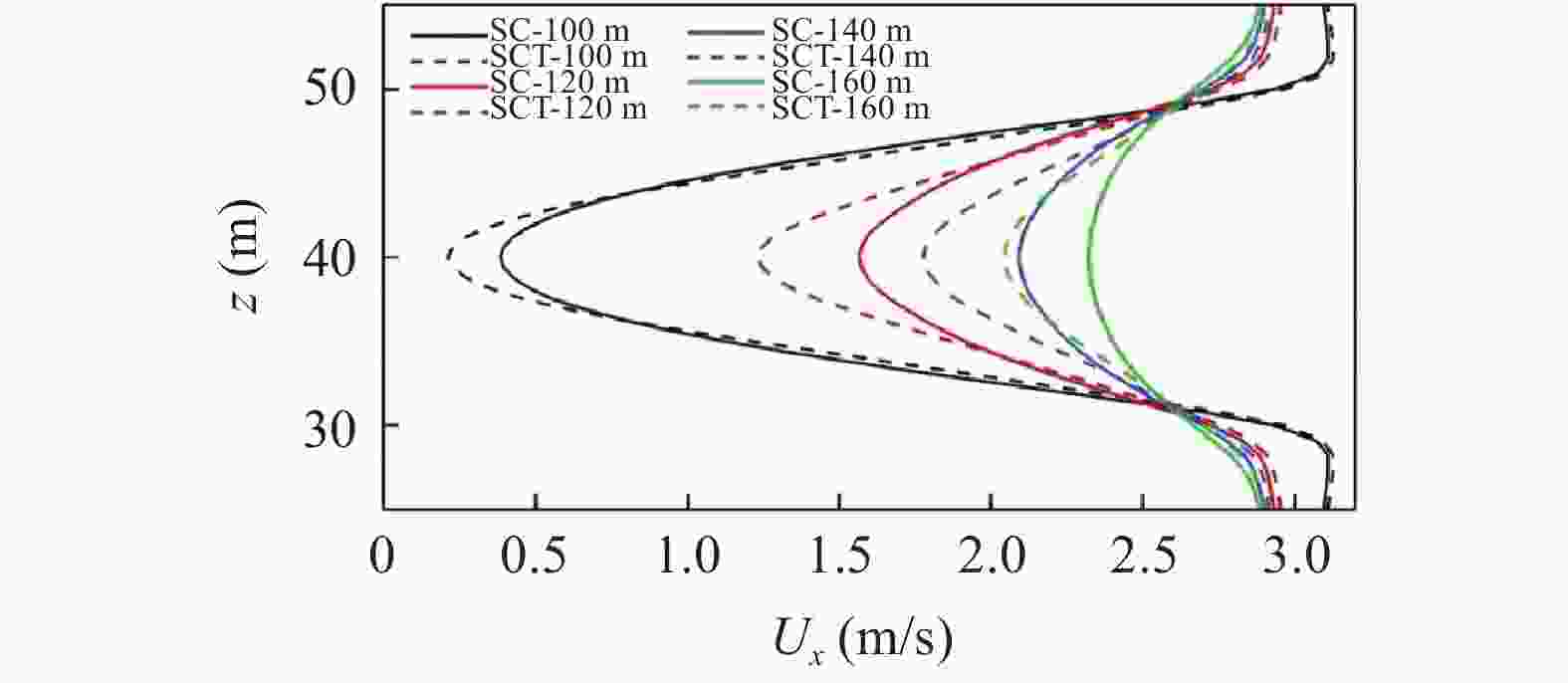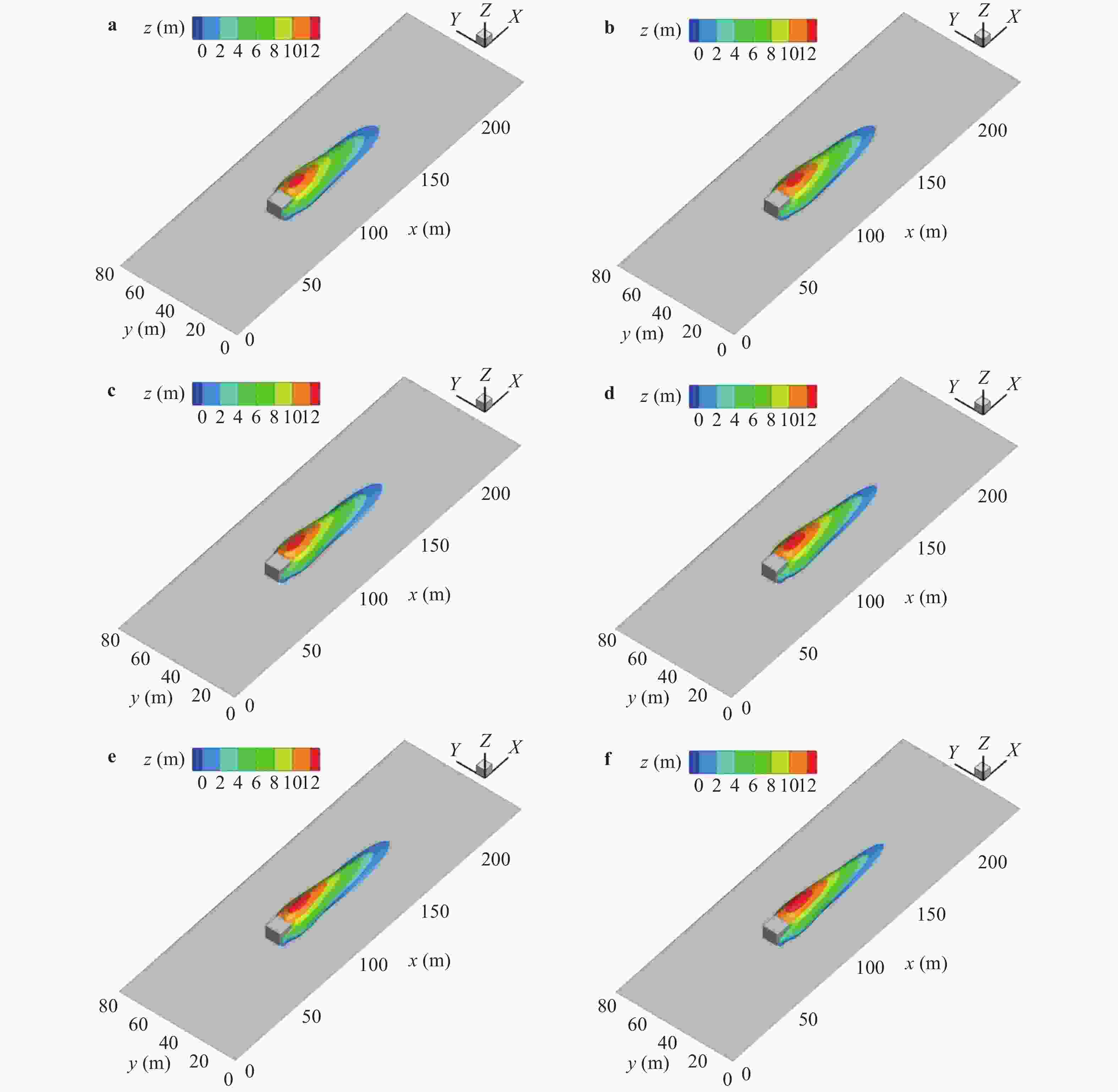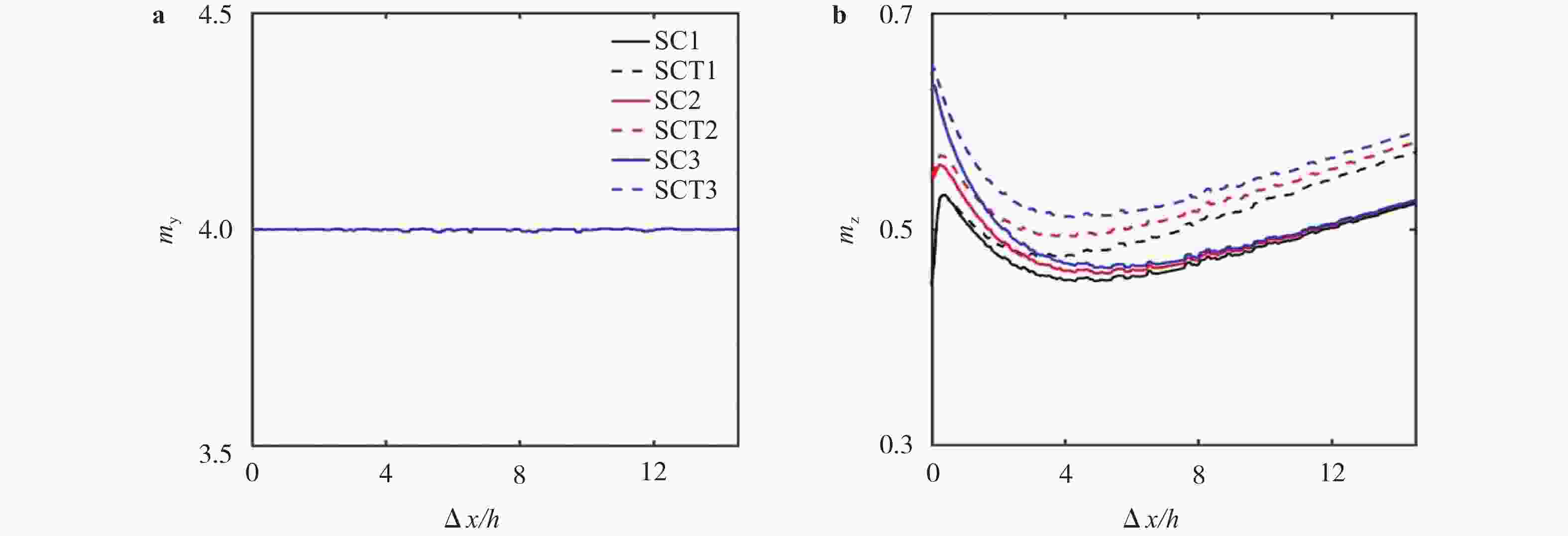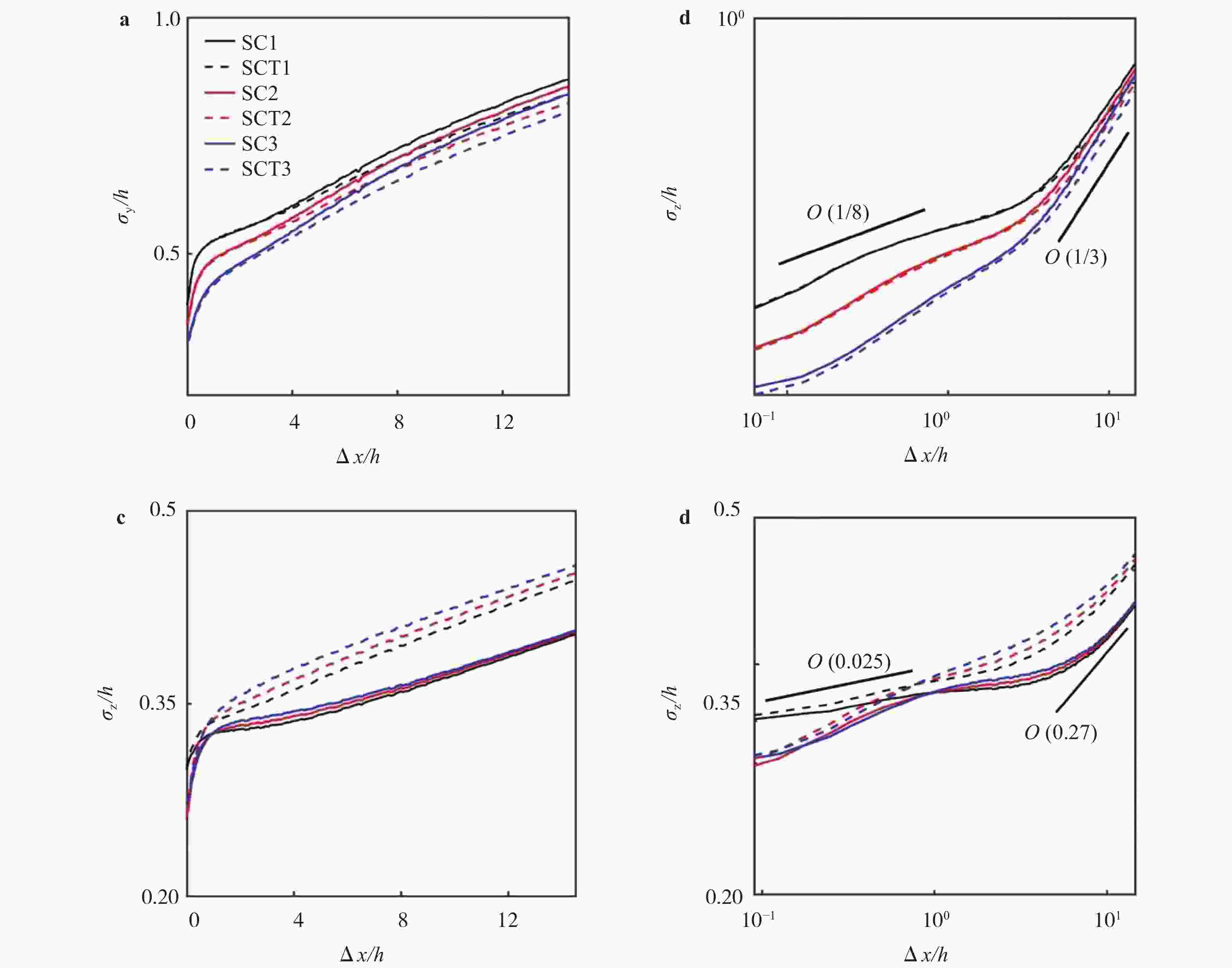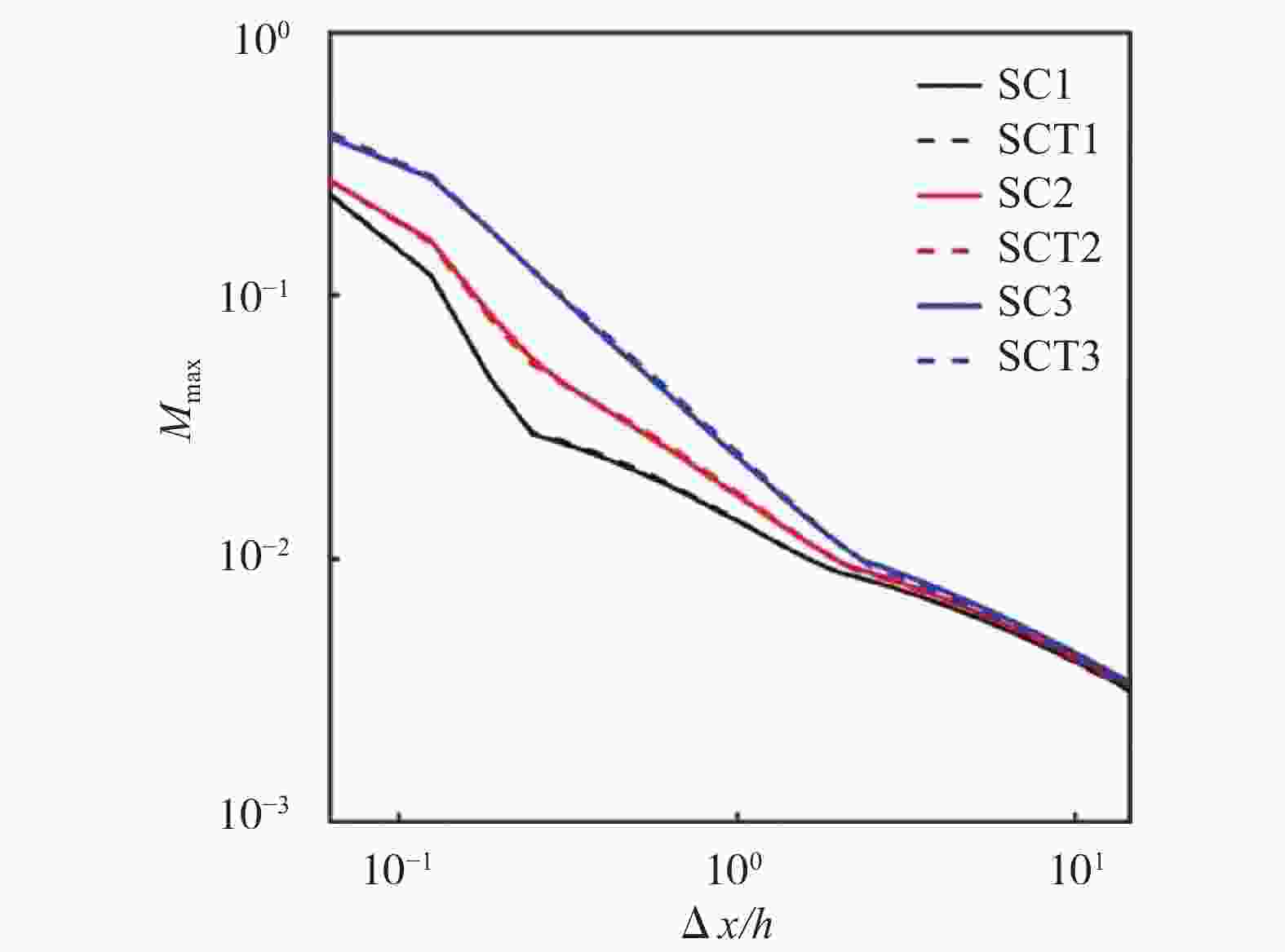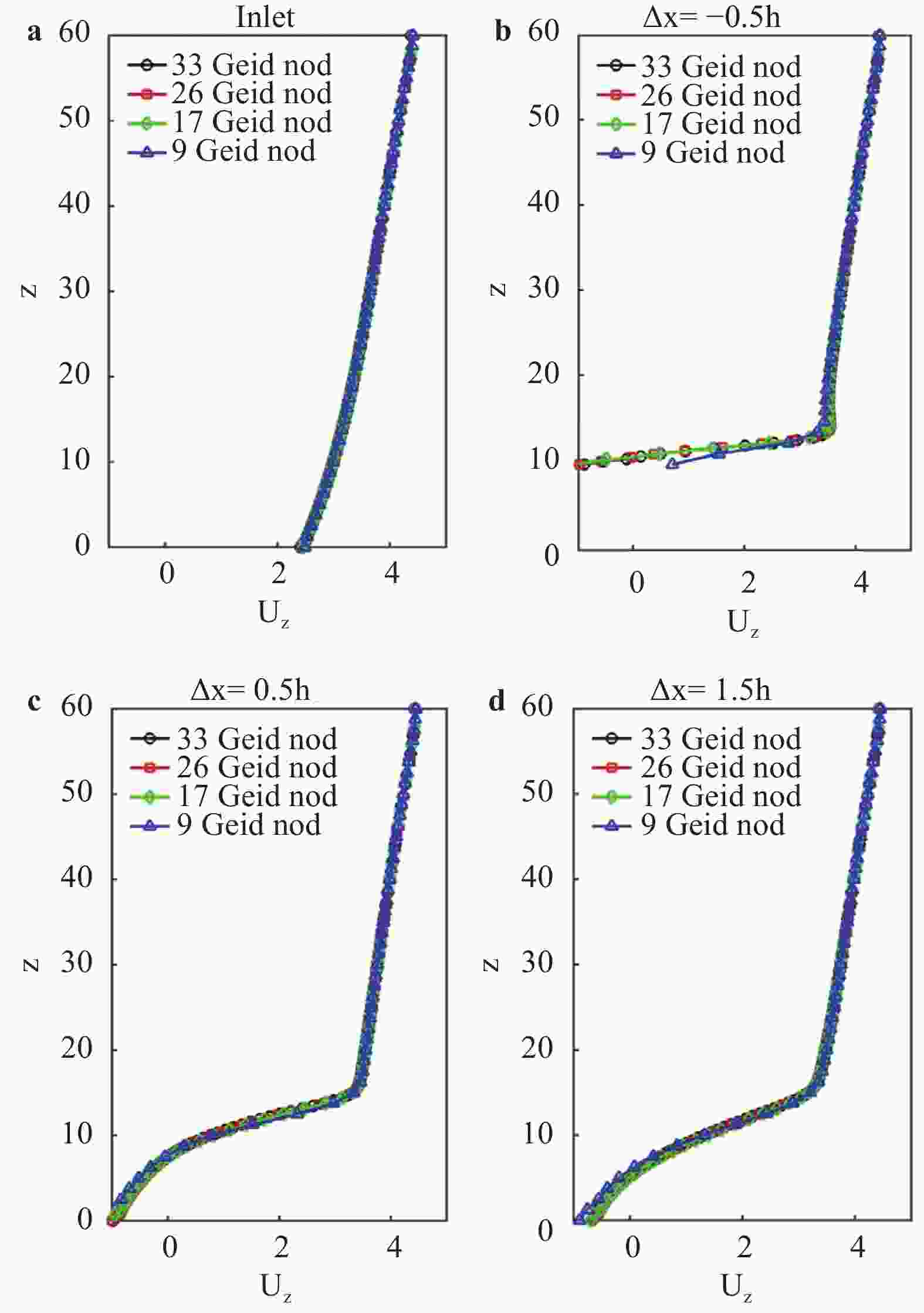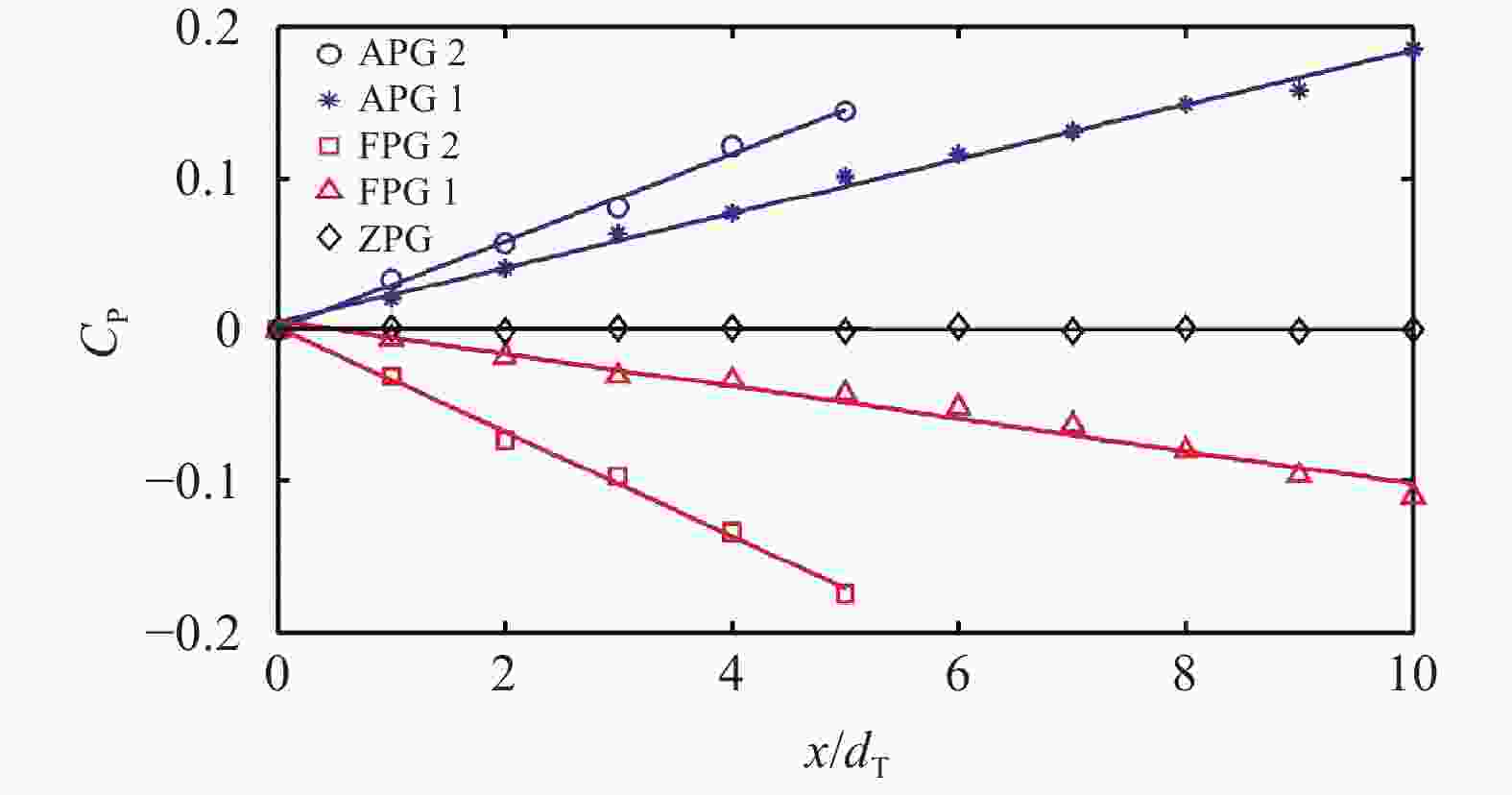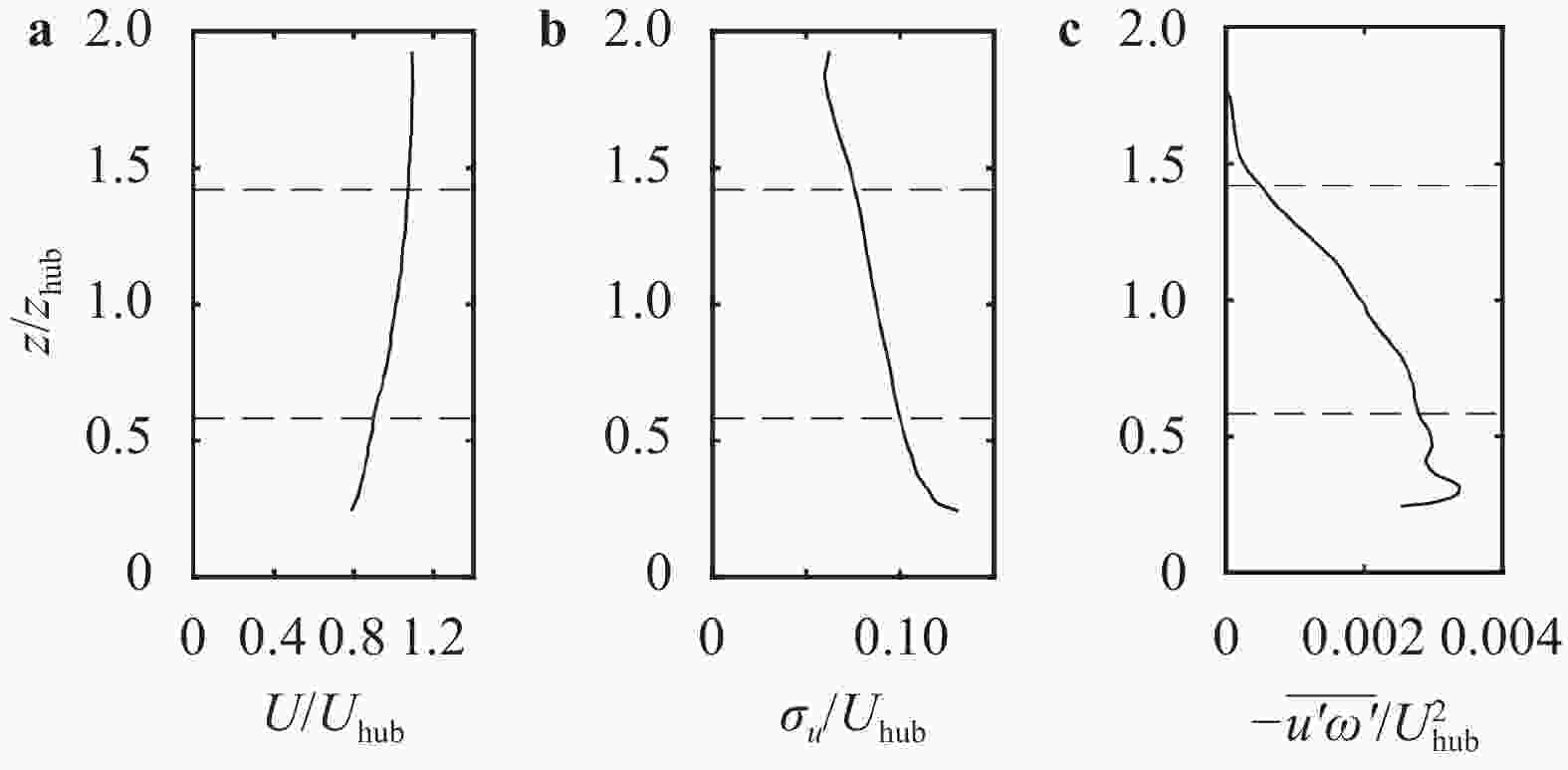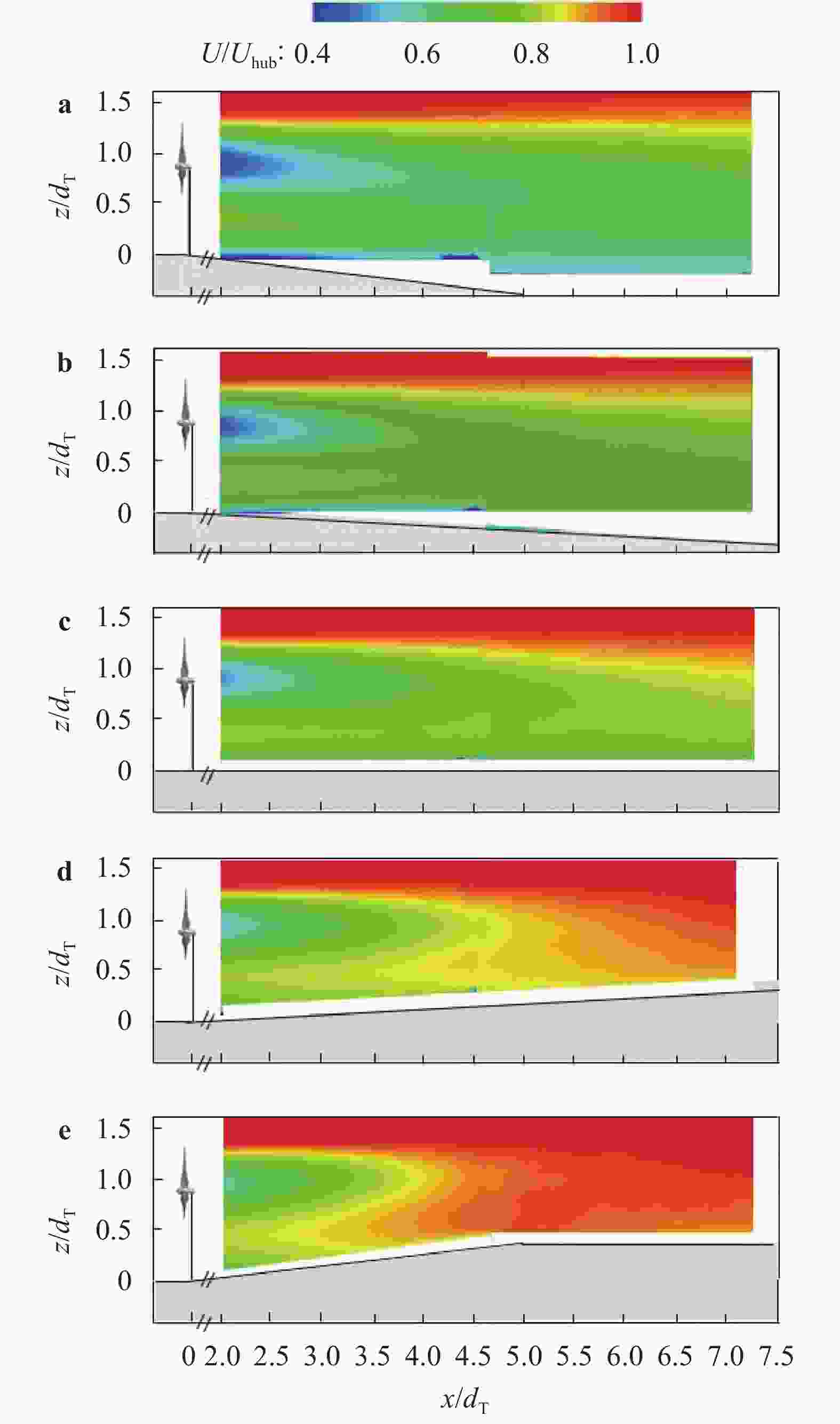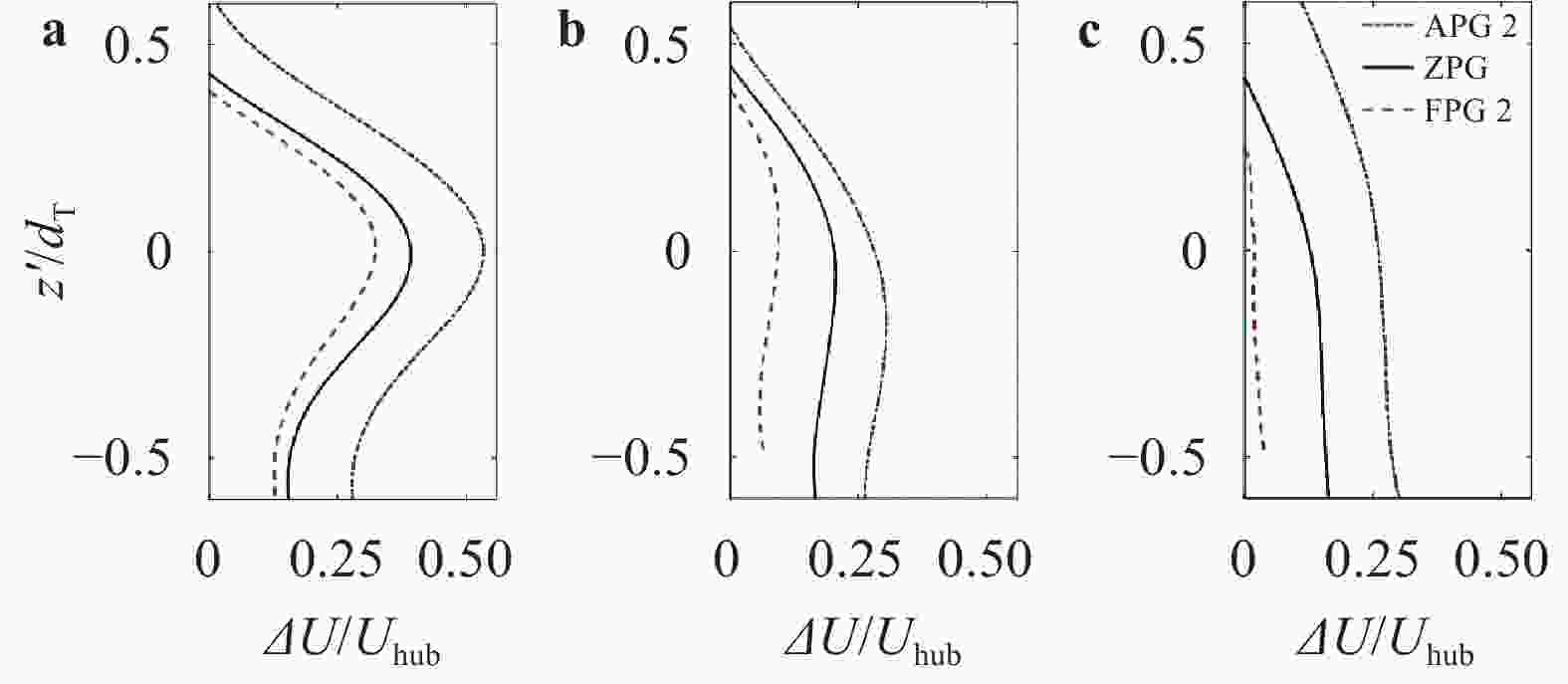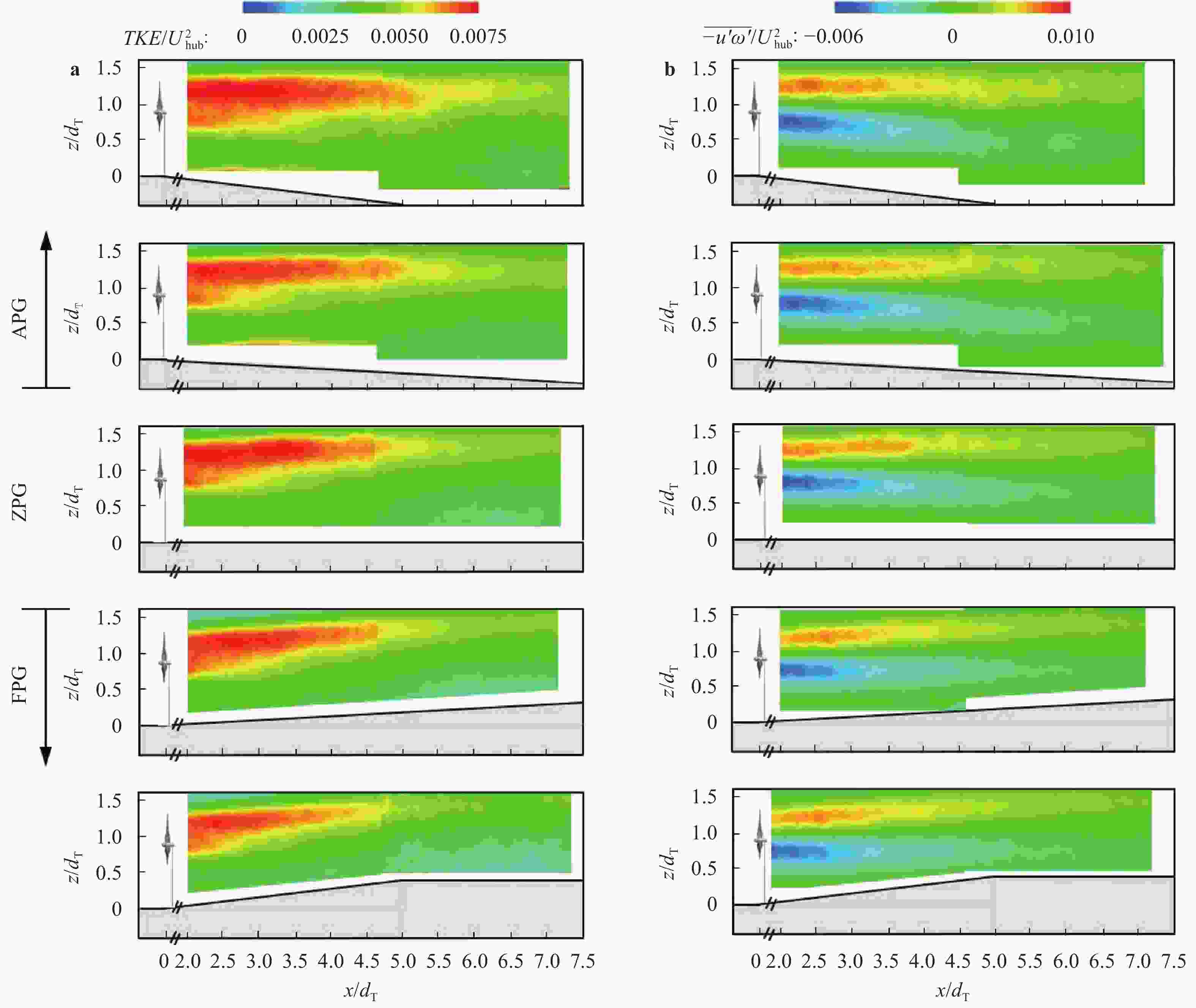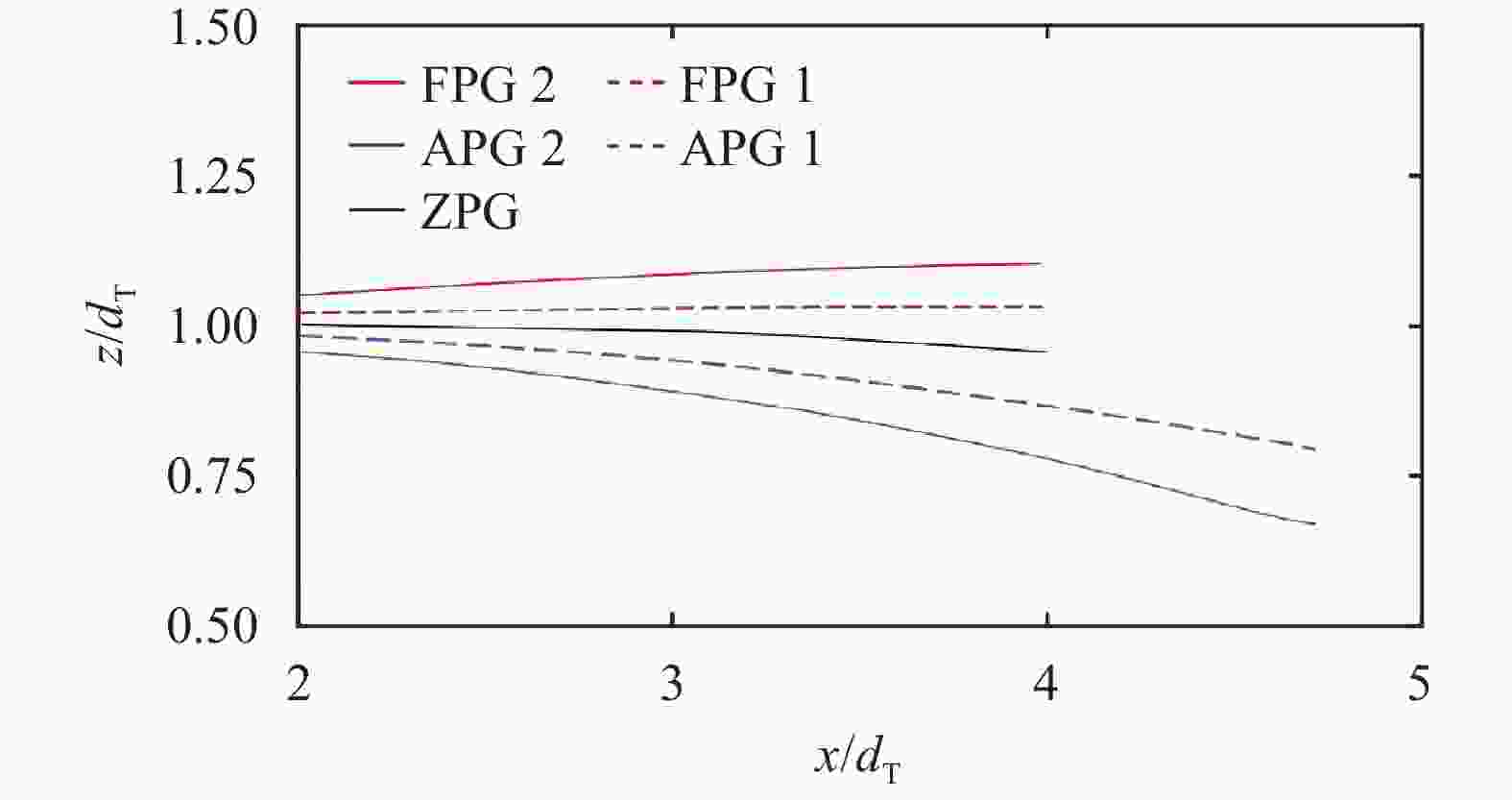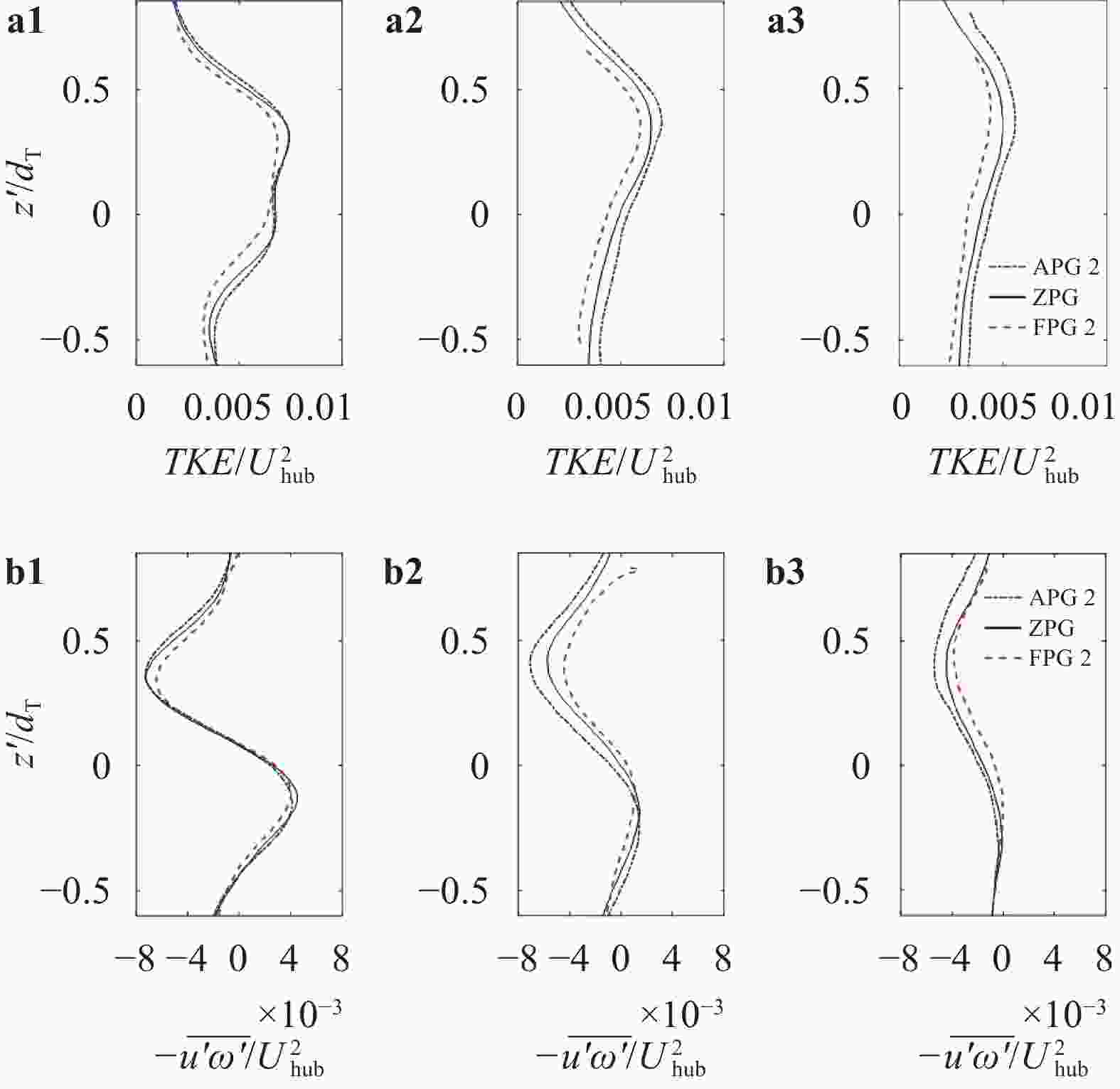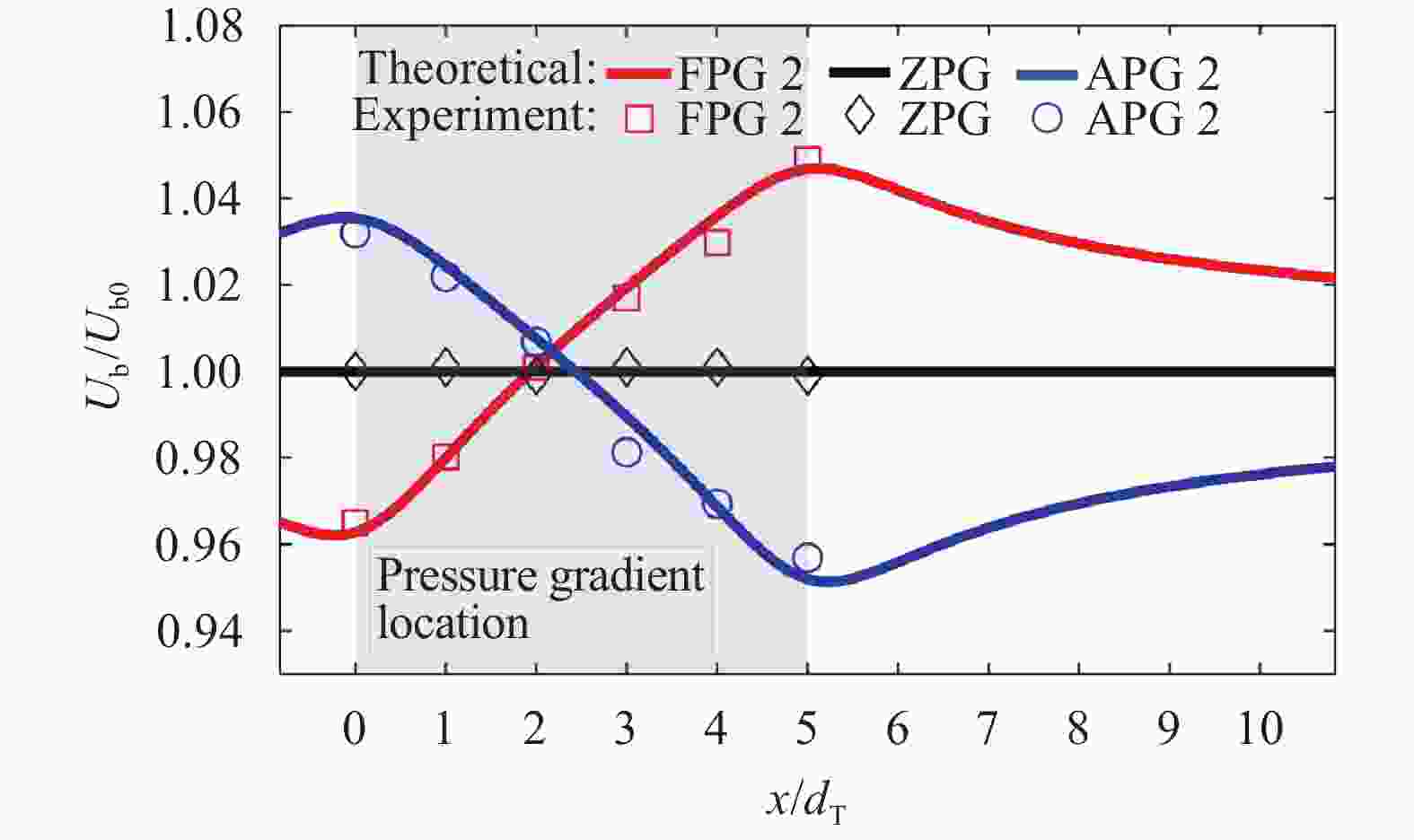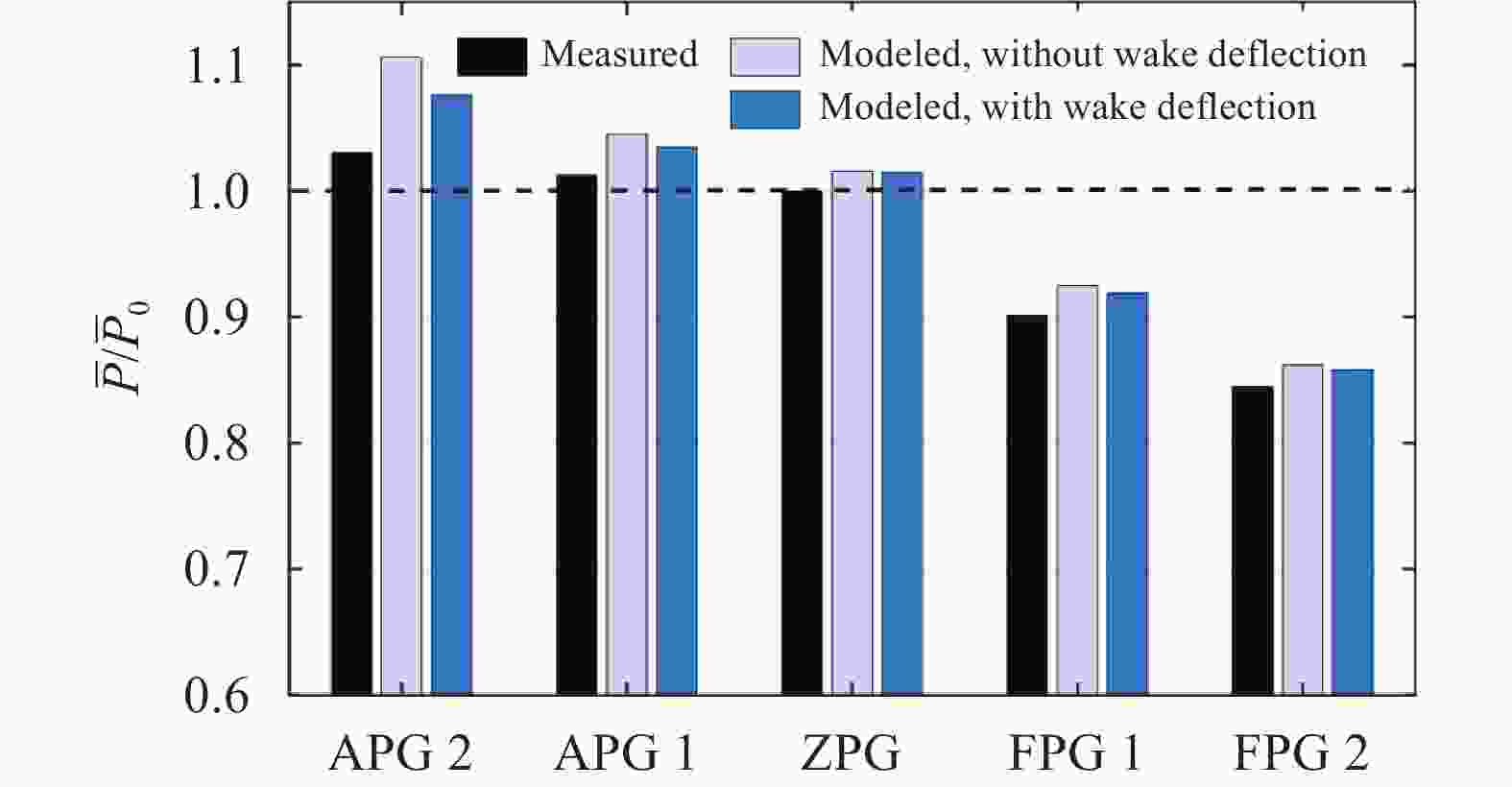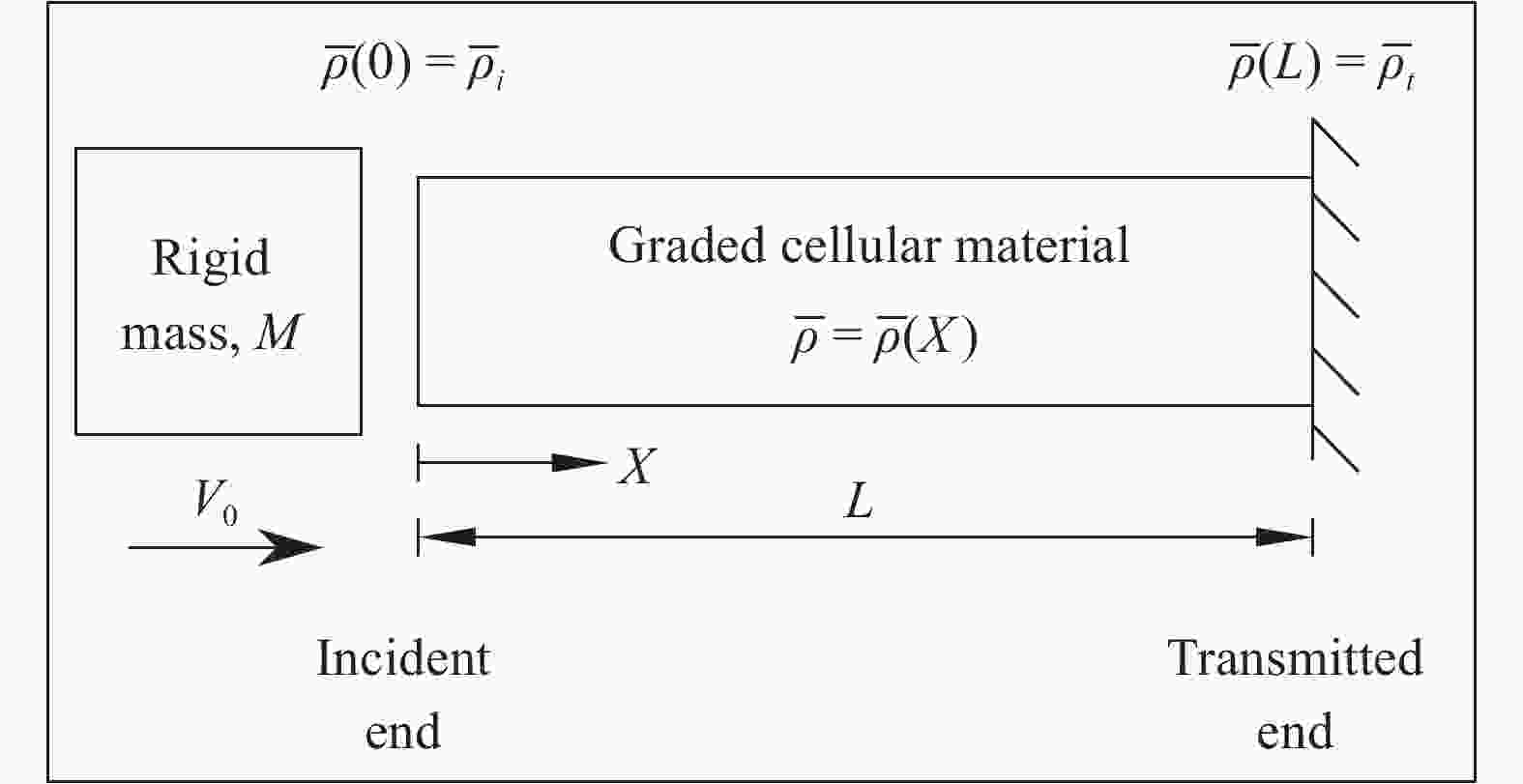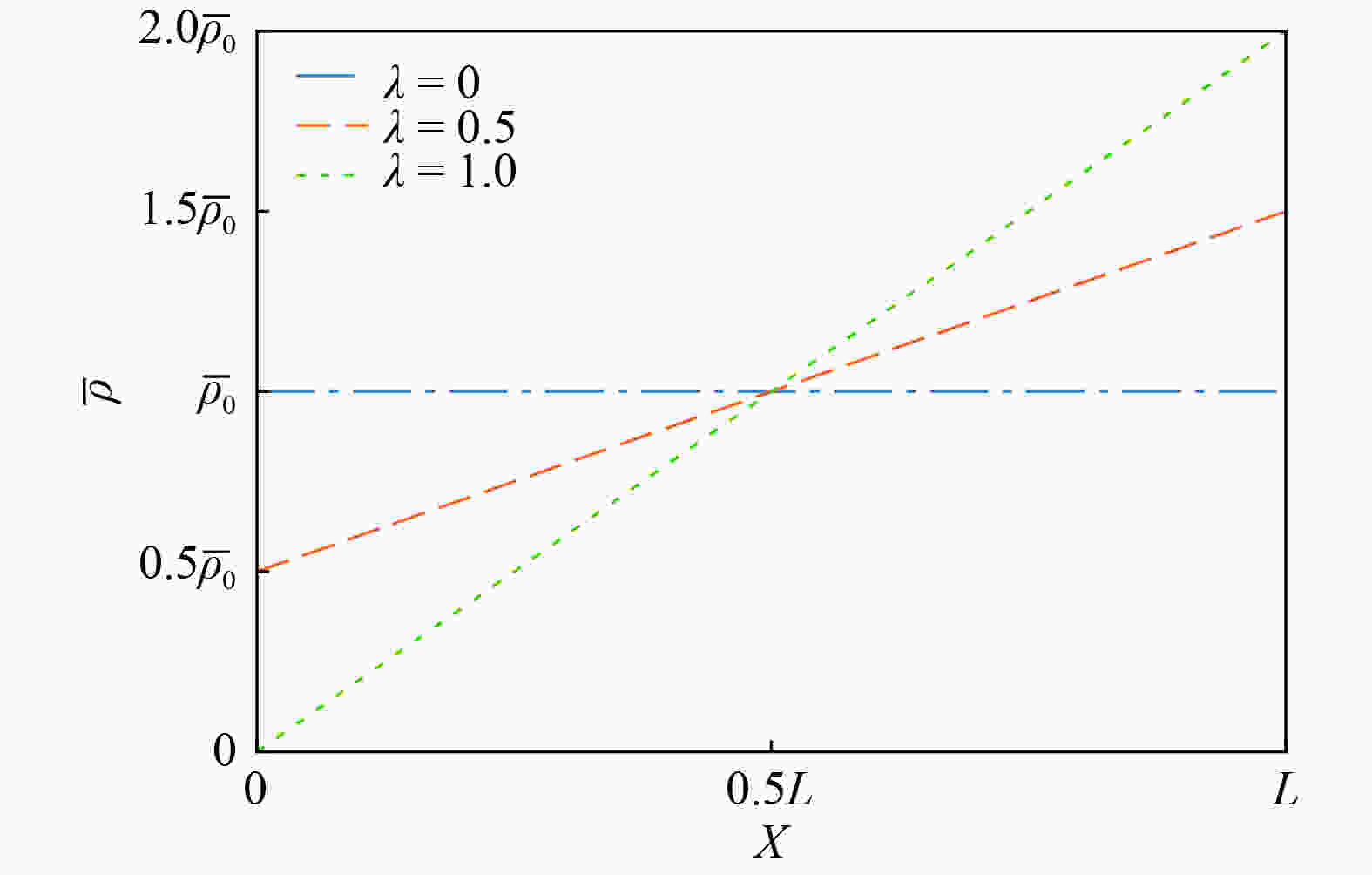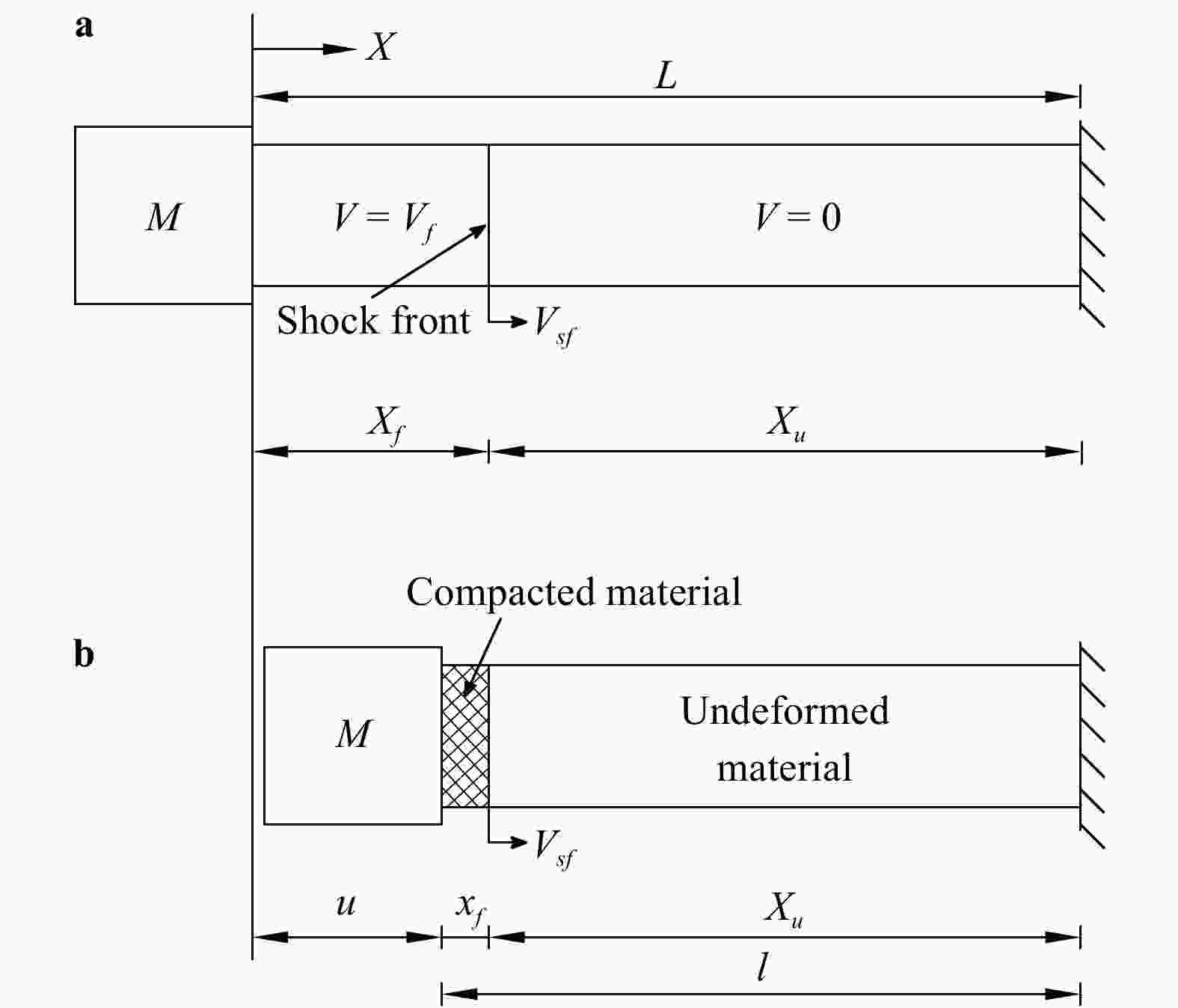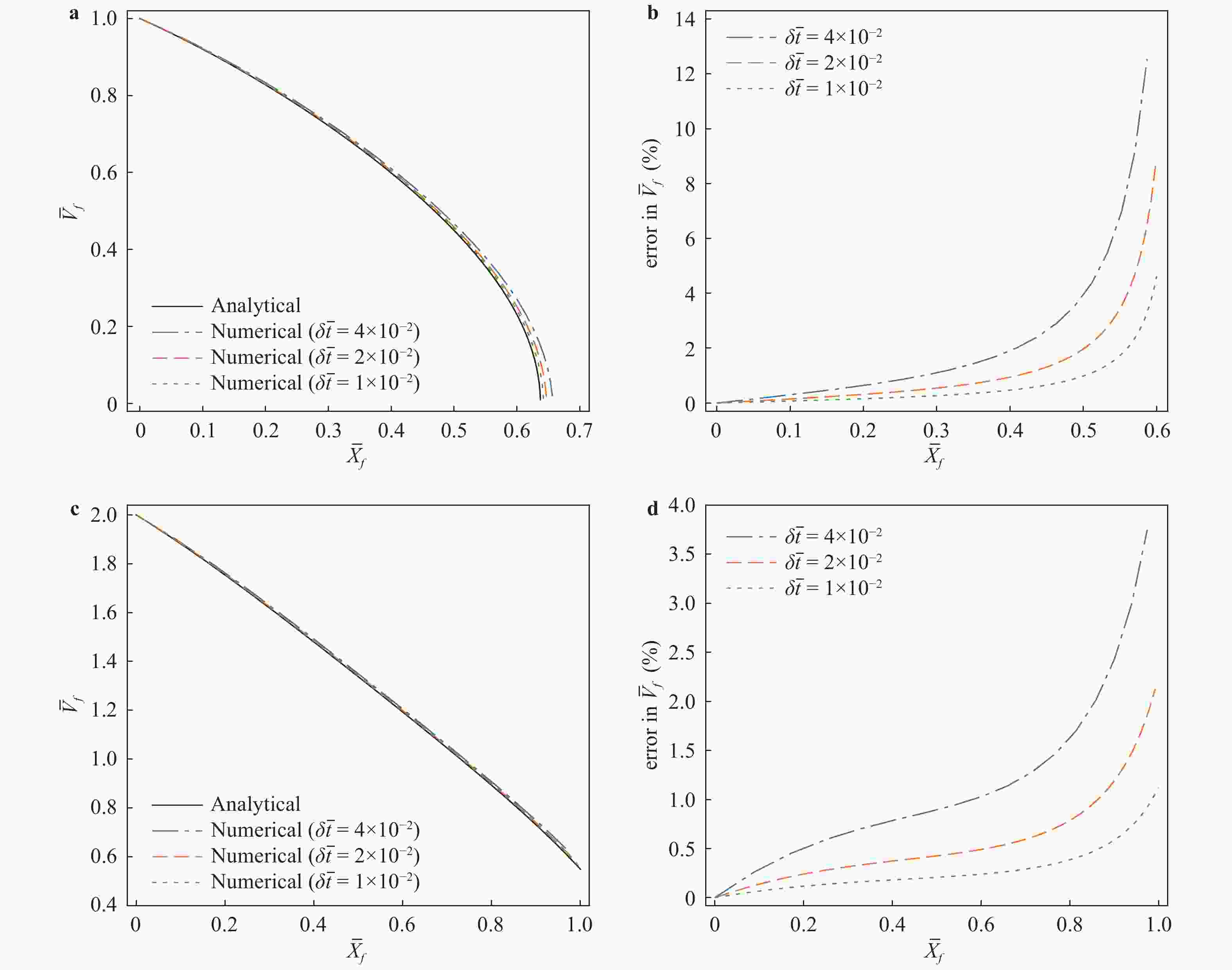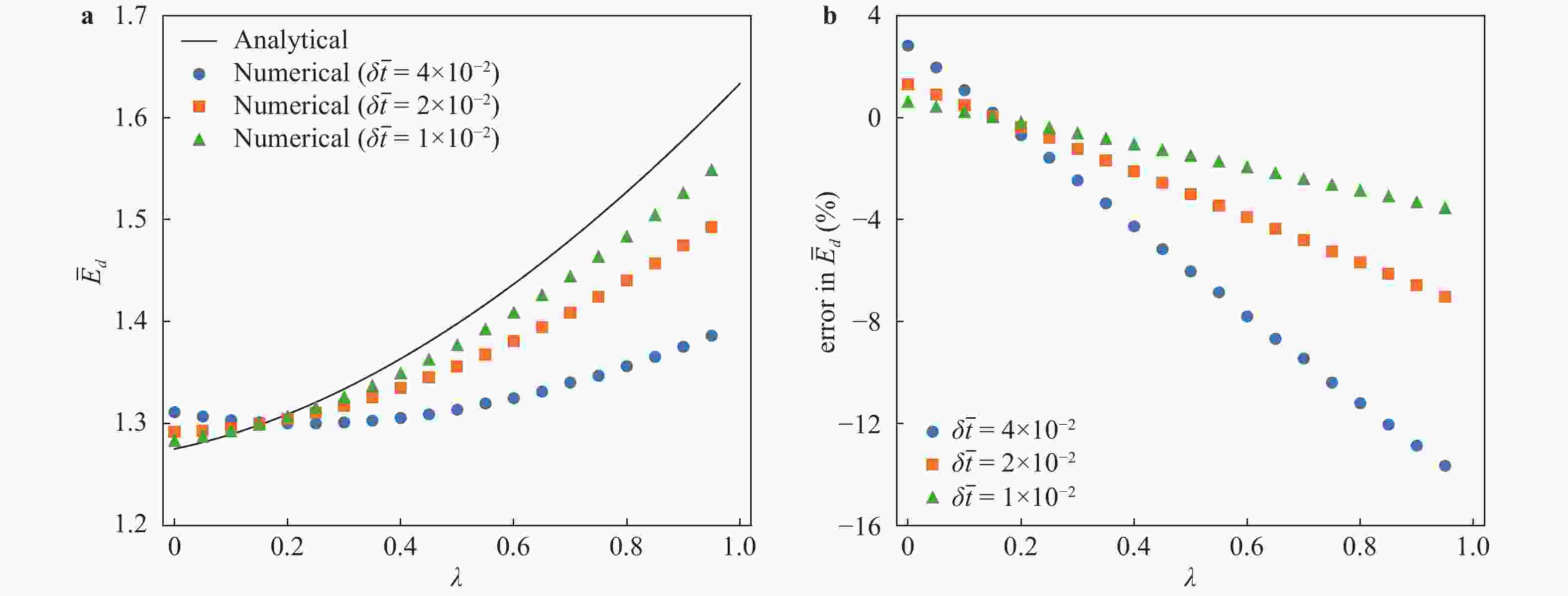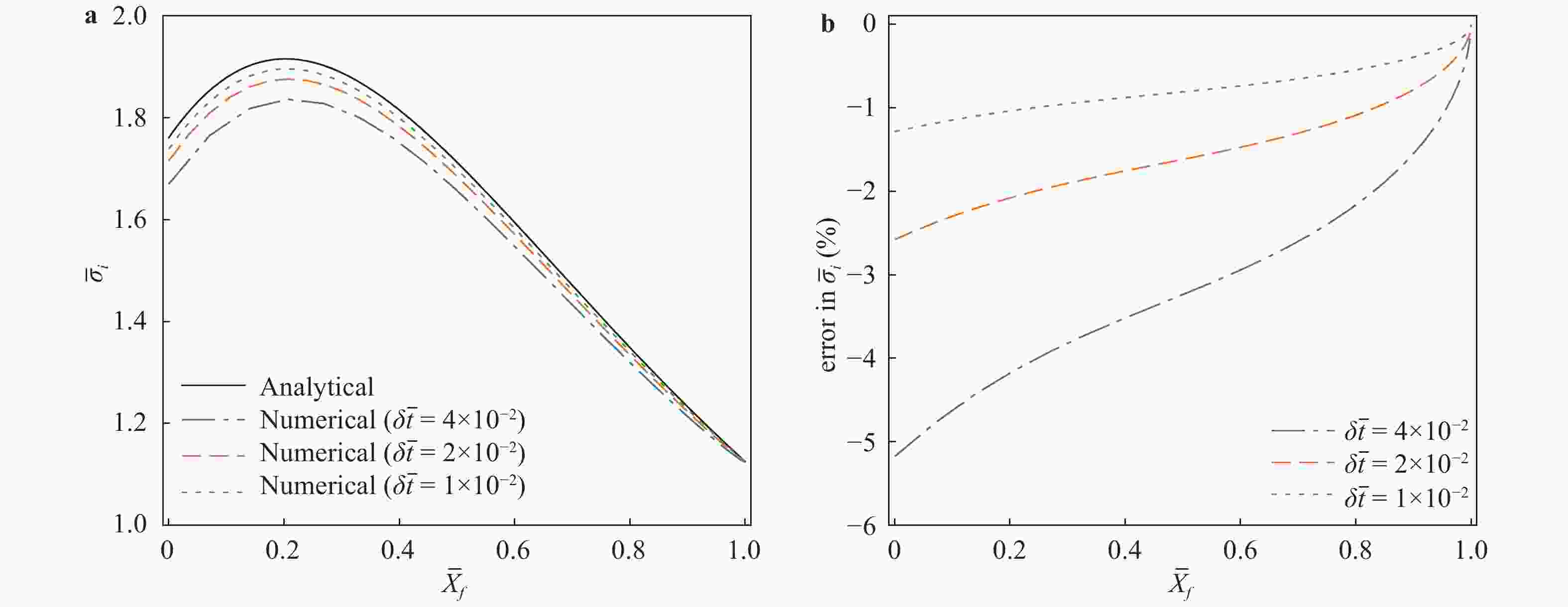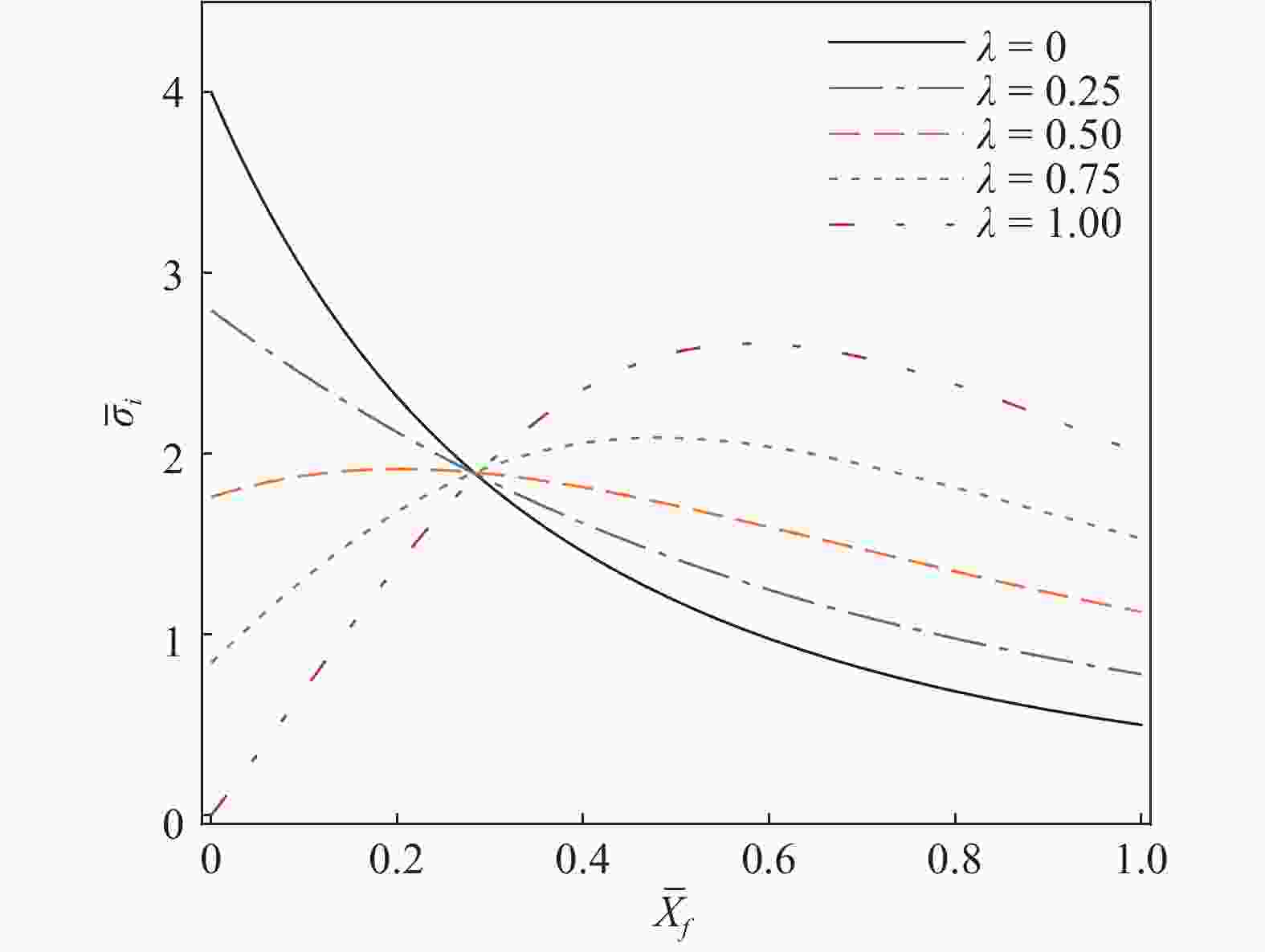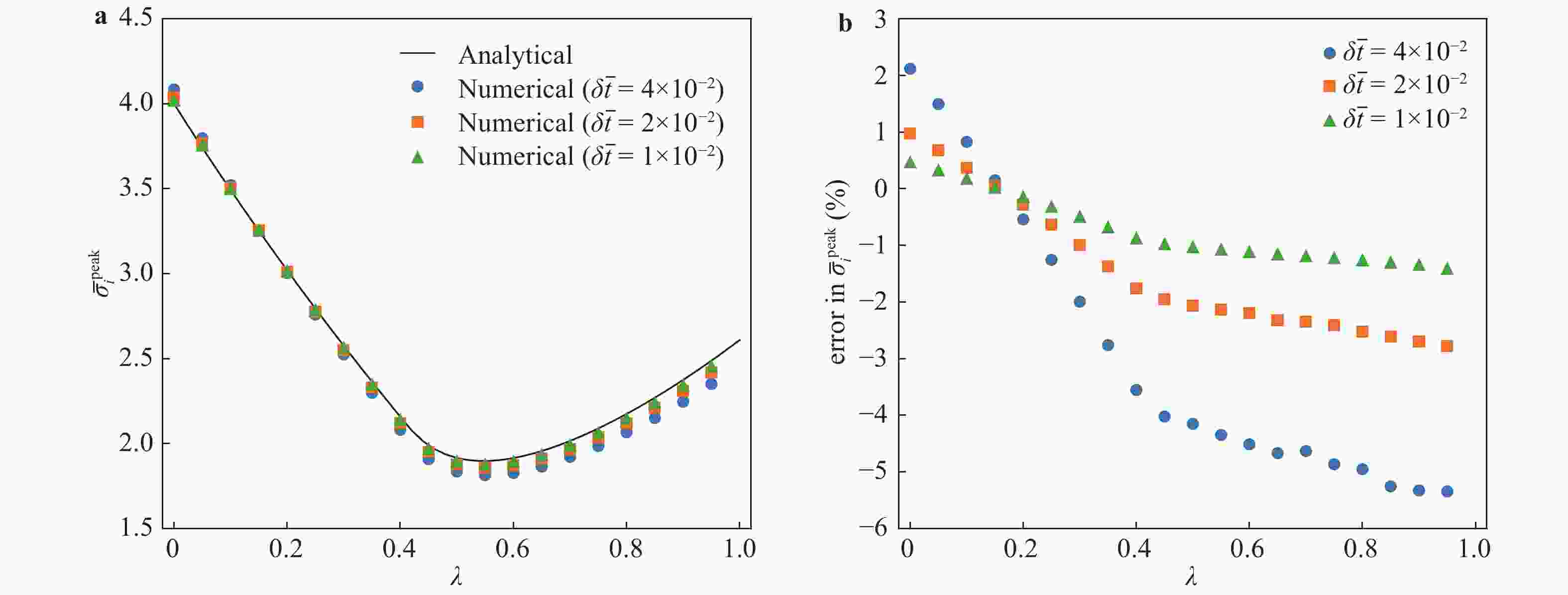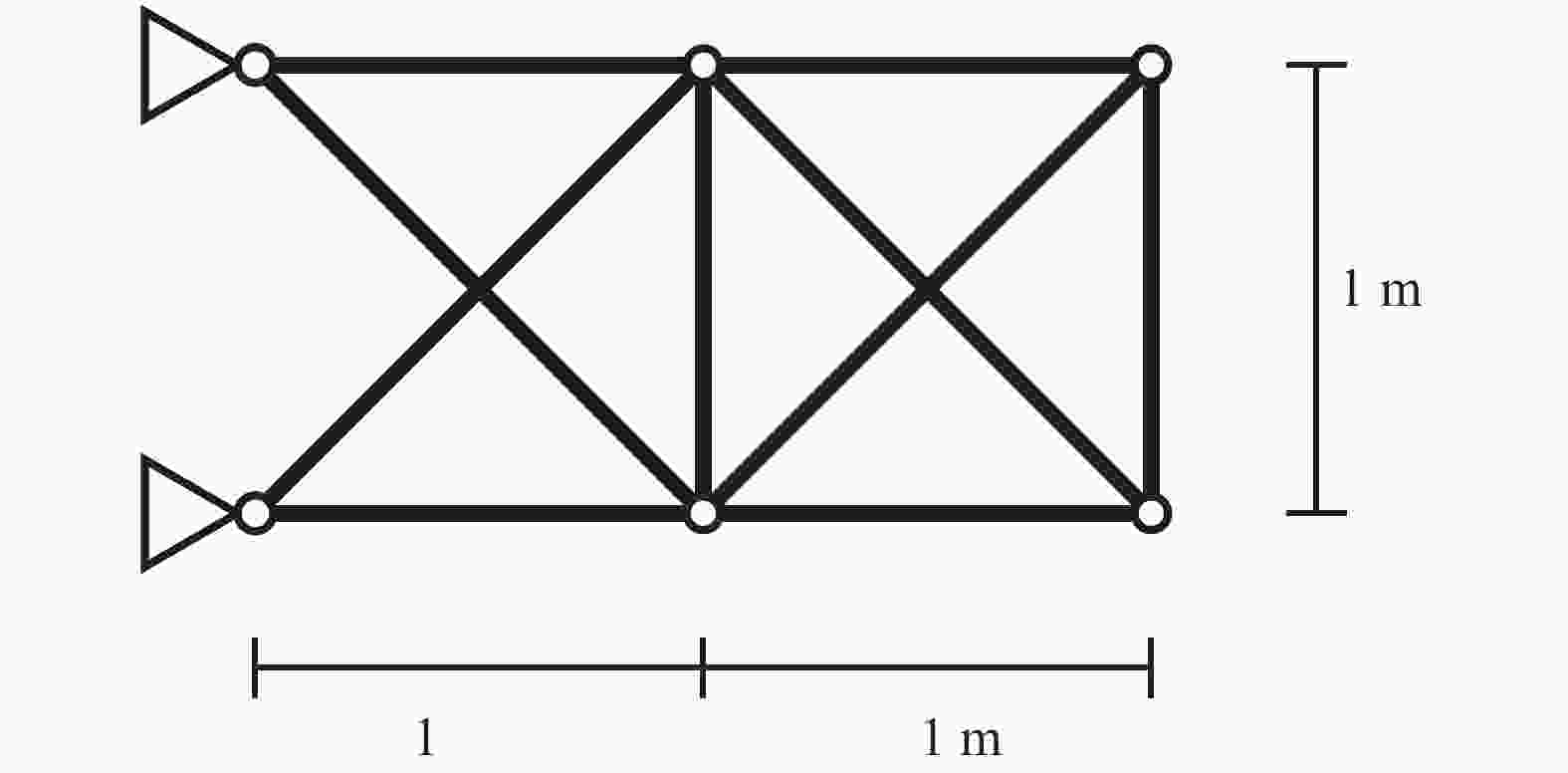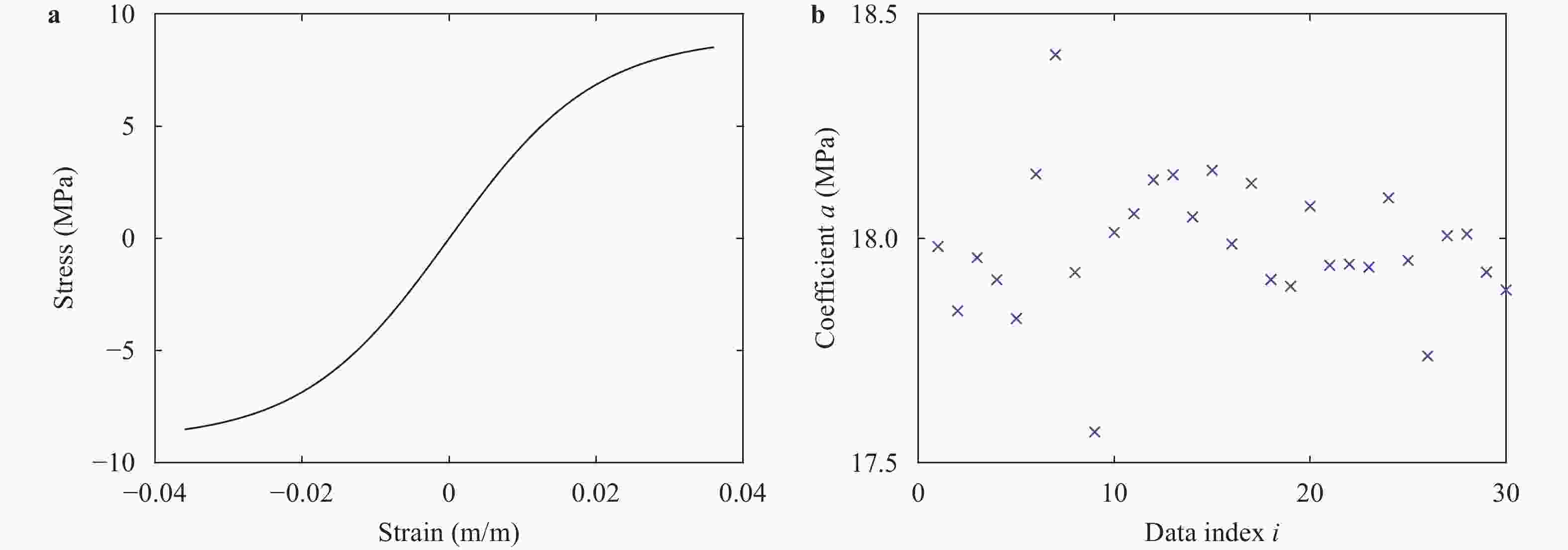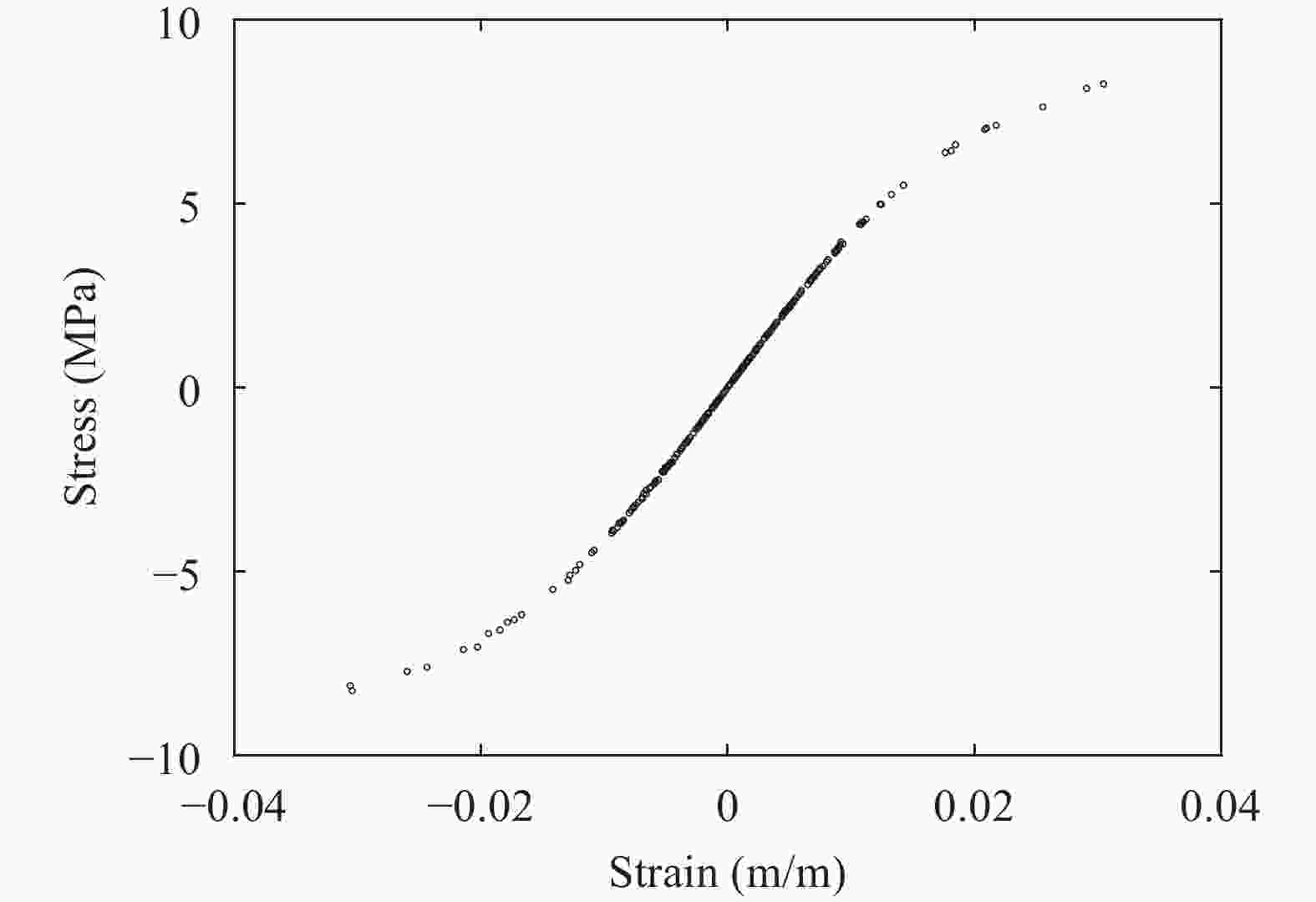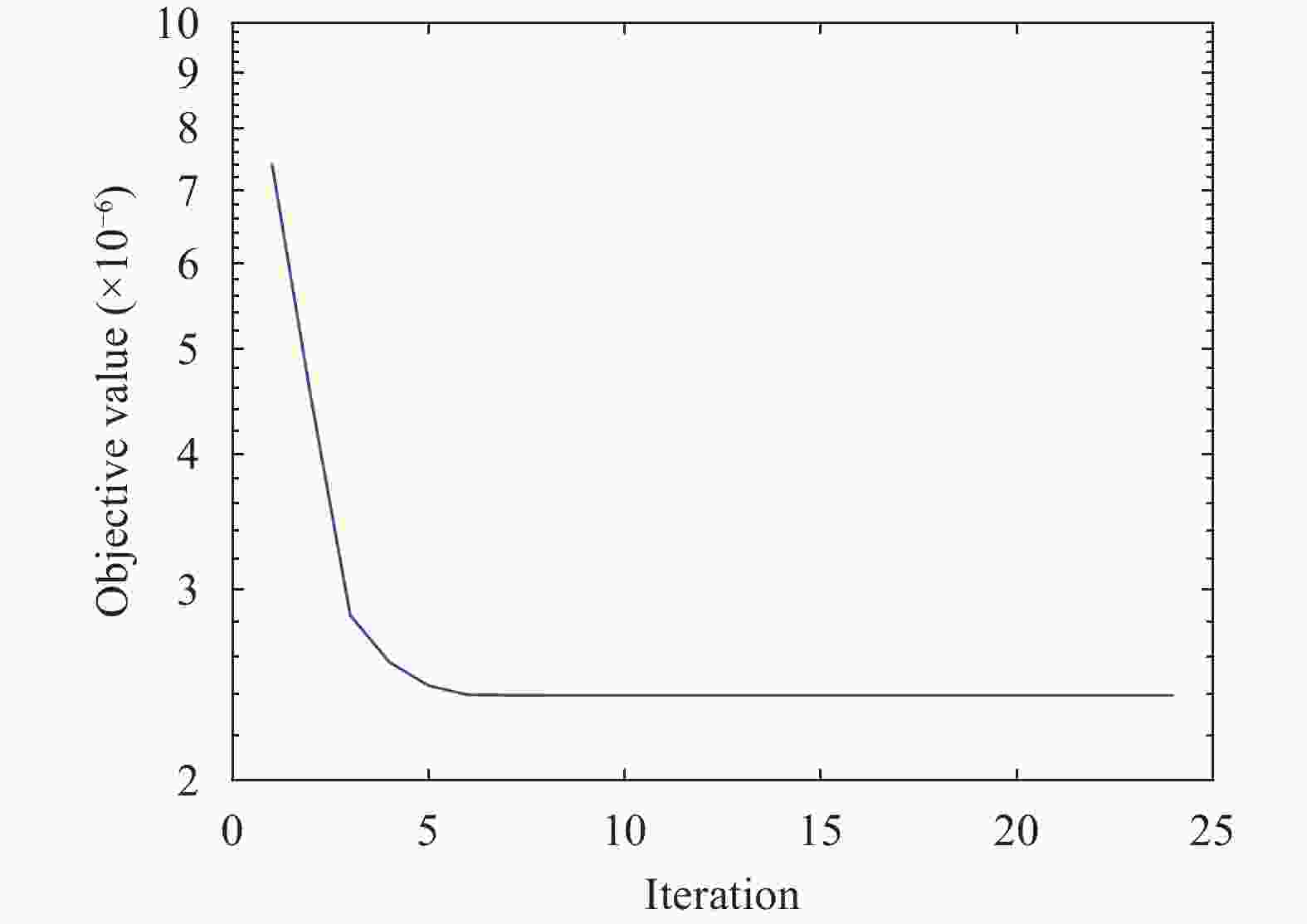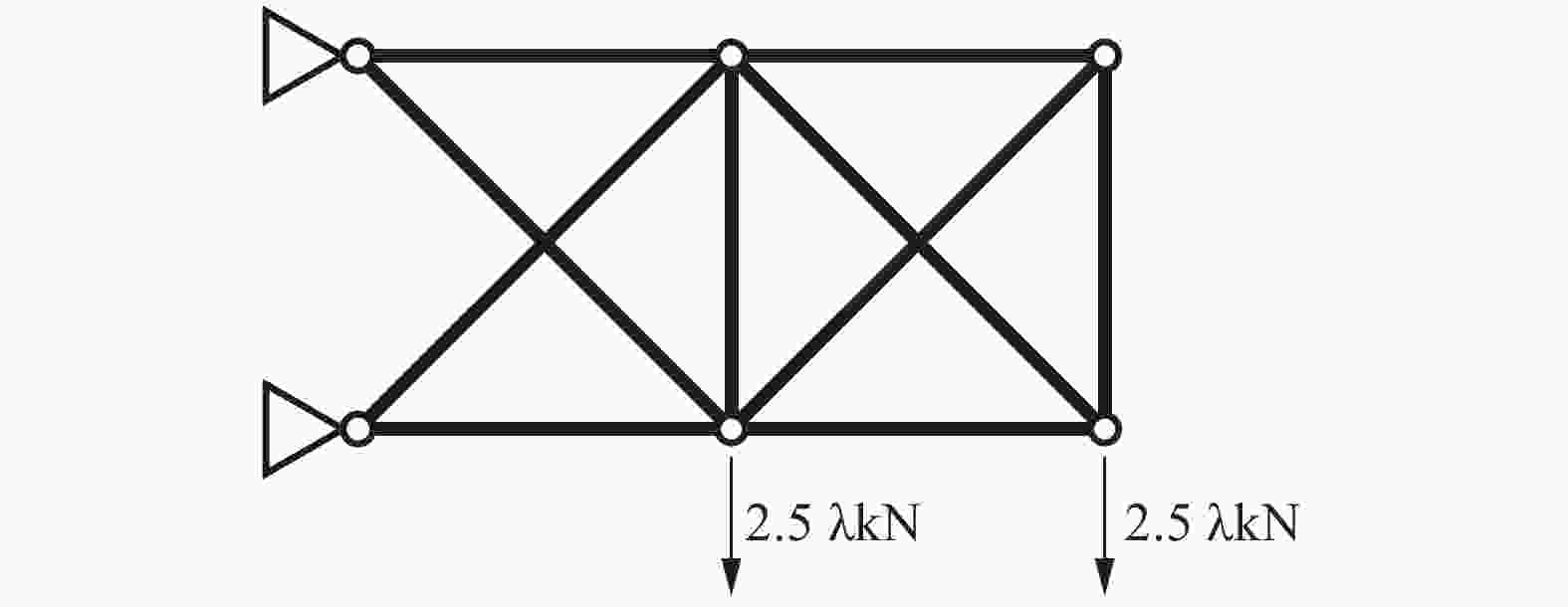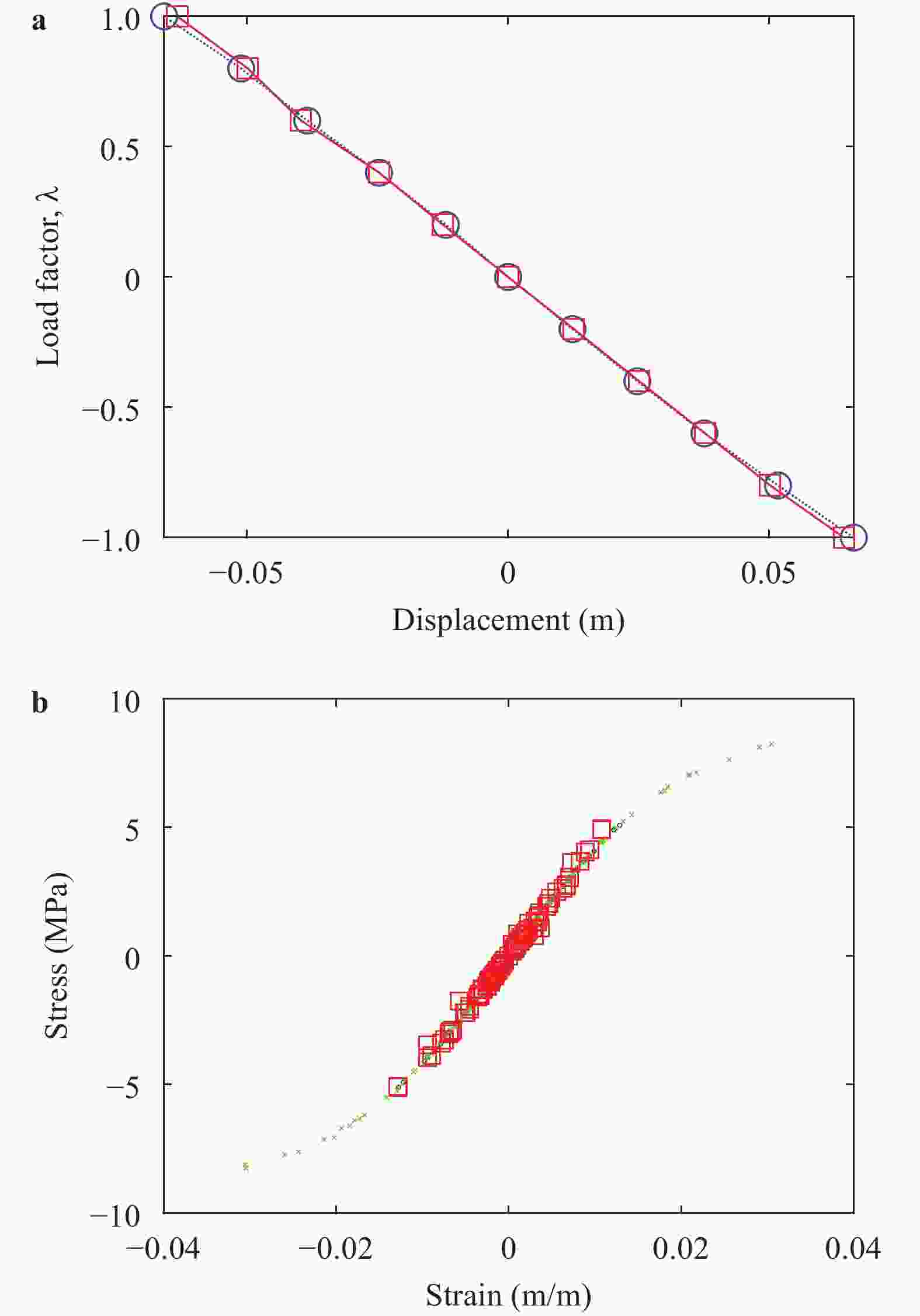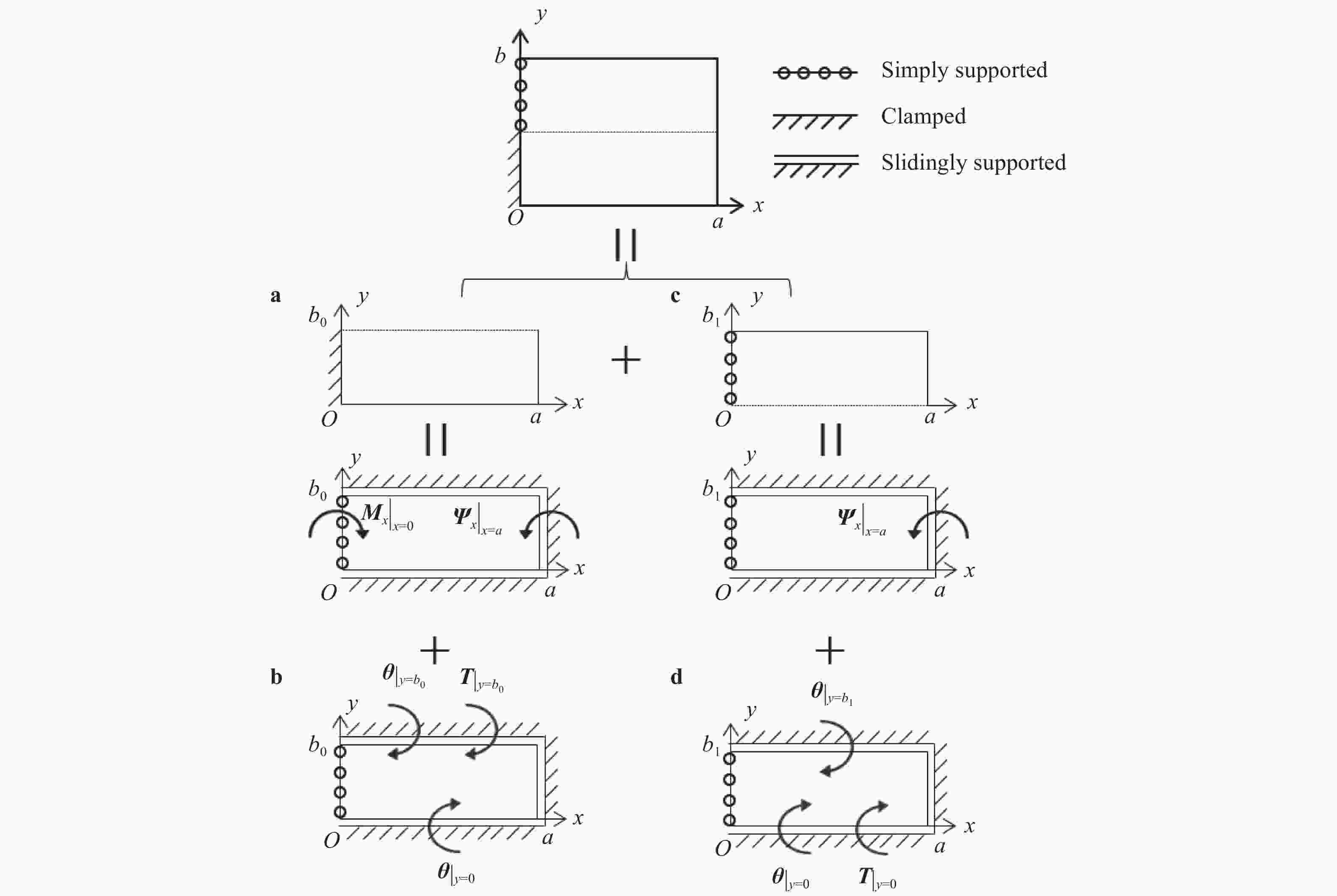Institute of Mechanics,
Chinese Academy of Sciences
2021 Vol.11(5)
Display Mode: |
Theoretical and Applied Mechanics Letters 11 (2021) 100303.
doi: 10.1016/j.taml.2021.100303
Abstract:
Coherent vorticity dynamics and dissipation in a utility-scale wind turbine wake with uniform inflow
Theoretical and Applied Mechanics Letters 11 (2021) 100292.
doi: 10.1016/j.taml.2021.100292
Abstract:
The vorticity dynamics and its relationship to dissipation in the wake of a utility-scale wind turbine are investigated through large-eddy simulation. The vorticity dynamics is assessed through the enstrophy, which is related to the turbulent dissipation. The averaged enstrophy and turbulent dissipation are shown to be quantitatively similar in the wake. Using temporal phase averaging, the vorticity fluctuations are decomposed into coherent and random fluctuations with respect to the frequency of the tip vortices. The enstrophy in the tip vortices is dominated by coherent fluctuations, while the coherent fluctuations of root vortices are immediately saturated by the random vorticity fluctuations of the unstable hub vortex. The coherent strain rate has significant differences compared to the coherent enstrophy within one diameter downwind of blade tip, but the random enstrophy and strain rate are relatively similar. Differences in coherent enstrophy and strain rate decrease further from the rotor.
The vorticity dynamics and its relationship to dissipation in the wake of a utility-scale wind turbine are investigated through large-eddy simulation. The vorticity dynamics is assessed through the enstrophy, which is related to the turbulent dissipation. The averaged enstrophy and turbulent dissipation are shown to be quantitatively similar in the wake. Using temporal phase averaging, the vorticity fluctuations are decomposed into coherent and random fluctuations with respect to the frequency of the tip vortices. The enstrophy in the tip vortices is dominated by coherent fluctuations, while the coherent fluctuations of root vortices are immediately saturated by the random vorticity fluctuations of the unstable hub vortex. The coherent strain rate has significant differences compared to the coherent enstrophy within one diameter downwind of blade tip, but the random enstrophy and strain rate are relatively similar. Differences in coherent enstrophy and strain rate decrease further from the rotor.
Theoretical and Applied Mechanics Letters 11 (2021) 100294.
doi: 10.1016/j.taml.2021.100294
Abstract:
Two sets of experiments in the St. Anthony Falls Laboratory (SAFL) wave tank facility and atmospheric wind tunnel are integrated to provide a scaled representation of a floating wind turbine under heave and pitch motions due to ocean waves. The quasi-coupling is established by controlling the turbine rotor speed to generate a thrust force mimicking steady or fluctuating wind gusts in the wave tank, and by using two actuators to oscillate a miniature turbine in the wind tunnel. Measured pitch and heave motions under varying waves are scaled down using rotor geometry and the wake meandering frequency to study the effect of the floating platform kinematics on the evolution and characteristics of the oscillating turbine wake. For a limited case of experimental conditions results provide a phenomenological and quantitative description of the floating-turbine system under variable waves and simulated wind gusts. Specifically, we demonstrate that wind gusts contribute to increase the platform pitch range, and that periodic large scale flow patches of high and low momentum flow are generated by the oscillating rotor in the turbulent boundary layer and are coherently convected through the wake. Both mechanisms could amplify the pitch response of downwind floating turbine units within the offshore power plant, in particular if the wave and/or wind forcing frequencies happen to approach the pitch natural frequency of the floating system.
Two sets of experiments in the St. Anthony Falls Laboratory (SAFL) wave tank facility and atmospheric wind tunnel are integrated to provide a scaled representation of a floating wind turbine under heave and pitch motions due to ocean waves. The quasi-coupling is established by controlling the turbine rotor speed to generate a thrust force mimicking steady or fluctuating wind gusts in the wave tank, and by using two actuators to oscillate a miniature turbine in the wind tunnel. Measured pitch and heave motions under varying waves are scaled down using rotor geometry and the wake meandering frequency to study the effect of the floating platform kinematics on the evolution and characteristics of the oscillating turbine wake. For a limited case of experimental conditions results provide a phenomenological and quantitative description of the floating-turbine system under variable waves and simulated wind gusts. Specifically, we demonstrate that wind gusts contribute to increase the platform pitch range, and that periodic large scale flow patches of high and low momentum flow are generated by the oscillating rotor in the turbulent boundary layer and are coherently convected through the wake. Both mechanisms could amplify the pitch response of downwind floating turbine units within the offshore power plant, in particular if the wave and/or wind forcing frequencies happen to approach the pitch natural frequency of the floating system.
Theoretical and Applied Mechanics Letters 11 (2021) 100295.
doi: 10.1016/j.taml.2021.100295
Abstract:
Wind turbines are installed offshore with the assistance of a floating platform to help meet the world's increasing energy needs. However, the incident wind and extra incident wave disturbances have an impact on the performance and operation of the floating offshore wind turbine (FOWT) in comparison to bottom-fixed wind turbines. In this paper, model predictive control (MPC) is utilized to overcome the limitation caused by platform motion. Due to the ease of control synthesis, the MPC is developed using a simplified model instead of high fidelity simulation models. The performance of the controller is verified in the presence of realistic wind and wave disturbances. The study demonstrates the effectiveness of MPC in reducing platform motions and power regulation of FOWTs.
Wind turbines are installed offshore with the assistance of a floating platform to help meet the world's increasing energy needs. However, the incident wind and extra incident wave disturbances have an impact on the performance and operation of the floating offshore wind turbine (FOWT) in comparison to bottom-fixed wind turbines. In this paper, model predictive control (MPC) is utilized to overcome the limitation caused by platform motion. Due to the ease of control synthesis, the MPC is developed using a simplified model instead of high fidelity simulation models. The performance of the controller is verified in the presence of realistic wind and wave disturbances. The study demonstrates the effectiveness of MPC in reducing platform motions and power regulation of FOWTs.
Theoretical and Applied Mechanics Letters 11 (2021) 100296.
doi: 10.1016/j.taml.2021.100296
Abstract:
The concentration distribution of urban air pollutants is closely related to people's health. As an important utilization form of urban wind power, rooftop wind turbines have been widely used in cities. The wake effect of the rooftop wind turbines will change the flow behind buildings and then affect the pollutant dispersion. To this end, the pollutant dispersion behind the building is studied via the computational fluid dynamics method. The actuator disk model and idealized cube are adopted to model the wind turbine and the building, respectively. The study shows that the rooftop wind turbine can reduce the pollutant mass fraction near the ground and the pedestrian level. Due to the wake effect of the rooftop wind turbine, the turbulent fluctuation behind the building is weakened, and the spanwise pollutant dispersion is suppressed. Besides, the rooftop wind turbine weakens the downwash movement of the building, which enhances the vertical pollutant dispersion.
The concentration distribution of urban air pollutants is closely related to people's health. As an important utilization form of urban wind power, rooftop wind turbines have been widely used in cities. The wake effect of the rooftop wind turbines will change the flow behind buildings and then affect the pollutant dispersion. To this end, the pollutant dispersion behind the building is studied via the computational fluid dynamics method. The actuator disk model and idealized cube are adopted to model the wind turbine and the building, respectively. The study shows that the rooftop wind turbine can reduce the pollutant mass fraction near the ground and the pedestrian level. Due to the wake effect of the rooftop wind turbine, the turbulent fluctuation behind the building is weakened, and the spanwise pollutant dispersion is suppressed. Besides, the rooftop wind turbine weakens the downwash movement of the building, which enhances the vertical pollutant dispersion.
Theoretical and Applied Mechanics Letters 11 (2021) 100297.
doi: 10.1016/j.taml.2021.100297
Abstract:
Wind-tunnel experiments were performed to study the effect of favorable and adverse constant pressure gradients (PG) from local changes in the topography right downwind of a model wind turbine. Particle image velocimetry was used to characterize the near and intermediate wake regions. We explored five scenarios, two favorable, two adverse PG, and a case with negligible PG. Results show that the PGs induce a wake deflection and modulate the wake. They imposed a relatively small impact on the turbulence kinetic energy and kinematic shear stress but a comparatively dominant effect on the bulk flow on the flow recovery. Based on this, a simple formulation is used to describe the impact of PG on the wake. We modeled the base flow through a linearized perturbation method; the wake is obtained by solving a simplified, integrated streamwise momentum equation. This approach reasonably estimated the flow profile and PG-induced power output variations.
Wind-tunnel experiments were performed to study the effect of favorable and adverse constant pressure gradients (PG) from local changes in the topography right downwind of a model wind turbine. Particle image velocimetry was used to characterize the near and intermediate wake regions. We explored five scenarios, two favorable, two adverse PG, and a case with negligible PG. Results show that the PGs induce a wake deflection and modulate the wake. They imposed a relatively small impact on the turbulence kinetic energy and kinematic shear stress but a comparatively dominant effect on the bulk flow on the flow recovery. Based on this, a simple formulation is used to describe the impact of PG on the wake. We modeled the base flow through a linearized perturbation method; the wake is obtained by solving a simplified, integrated streamwise momentum equation. This approach reasonably estimated the flow profile and PG-induced power output variations.
Theoretical and Applied Mechanics Letters 11 (2021) 100288.
doi: 10.1016/j.taml.2021.100288
Abstract:
Density-graded cellular materials have tremendous potential in structural applications where impact resistance is required. Cellular materials subjected to high impact loading result in a compaction type deformation, usually modeled using continuum-based shock theory. The resulting governing differential equation of the shock model is nonlinear, and density gradation further complicates the problem. Earlier studies have employed numerical methods to obtain the solution. In this study, an analytical closed-form solution is proposed to predict the response of density-graded cellular materials subjected to a rigid body impact. Solutions for the velocity of the impinging rigid body mass, the energy absorption capacity of the cellular material, and the incident stress are obtained for a single shock propagation. The results obtained are in excellent agreement with the existing numerical solutions found in the literature. The proposed analytical solution can be potentially used for parametric studies and for effectively designing graded structures to mitigate impact.
Density-graded cellular materials have tremendous potential in structural applications where impact resistance is required. Cellular materials subjected to high impact loading result in a compaction type deformation, usually modeled using continuum-based shock theory. The resulting governing differential equation of the shock model is nonlinear, and density gradation further complicates the problem. Earlier studies have employed numerical methods to obtain the solution. In this study, an analytical closed-form solution is proposed to predict the response of density-graded cellular materials subjected to a rigid body impact. Solutions for the velocity of the impinging rigid body mass, the energy absorption capacity of the cellular material, and the incident stress are obtained for a single shock propagation. The results obtained are in excellent agreement with the existing numerical solutions found in the literature. The proposed analytical solution can be potentially used for parametric studies and for effectively designing graded structures to mitigate impact.
Theoretical and Applied Mechanics Letters 11 (2021) 100289.
doi: 10.1016/j.taml.2021.100289
Abstract:
Data-driven computing in elasticity attempts to directly use experimental data on material, without constructing an empirical model of the constitutive relation, to predict an equilibrium state of a structure subjected to a specified external load. Provided that a data set comprising stress–strain pairs of material is available, a data-driven method using the kernel method and the regularized least-squares was developed to extract a manifold on which the points in the data set approximately lie (Kanno 2021, Jpn. J. Ind. Appl. Math.). From the perspective of physical experiments, stress field cannot be directly measured, while displacement and force fields are measurable. In this study, we extend the previous kernel method to the situation that pairs of displacement and force, instead of pairs of stress and strain, are available as an input data set. A new regularized least-squares problem is formulated in this problem setting, and an alternating minimization algorithm is proposed to solve the problem.
Data-driven computing in elasticity attempts to directly use experimental data on material, without constructing an empirical model of the constitutive relation, to predict an equilibrium state of a structure subjected to a specified external load. Provided that a data set comprising stress–strain pairs of material is available, a data-driven method using the kernel method and the regularized least-squares was developed to extract a manifold on which the points in the data set approximately lie (Kanno 2021, Jpn. J. Ind. Appl. Math.). From the perspective of physical experiments, stress field cannot be directly measured, while displacement and force fields are measurable. In this study, we extend the previous kernel method to the situation that pairs of displacement and force, instead of pairs of stress and strain, are available as an input data set. A new regularized least-squares problem is formulated in this problem setting, and an alternating minimization algorithm is proposed to solve the problem.
Theoretical and Applied Mechanics Letters 11 (2021) 100293.
doi: 10.1016/j.taml.2021.100293
Abstract:
A novel symplectic superposition method has been proposed and developed for plate and shell problems in recent years. The method has yielded many new analytic solutions due to its rigorousness. In this study, the first endeavor is made to further developed the symplectic superposition method for the free vibration of rectangular thin plates with mixed boundary constraints on an edge. The Hamiltonian system-based governing equation is first introduced such that the mathematical techniques in the symplectic space are applied. The solution procedure incorporates separation of variables, symplectic eigen solution and superposition. The analytic solution of an original problem is finally obtained by a set of equations via the equivalence to the superposition of some elaborated subproblems. The natural frequency and mode shape results for representative plates with both clamped and simply supported boundary constraints imposed on the same edge are reported for benchmark use. The present method can be extended to more challenging problems that cannot be solved by conventional analytic methods.
A novel symplectic superposition method has been proposed and developed for plate and shell problems in recent years. The method has yielded many new analytic solutions due to its rigorousness. In this study, the first endeavor is made to further developed the symplectic superposition method for the free vibration of rectangular thin plates with mixed boundary constraints on an edge. The Hamiltonian system-based governing equation is first introduced such that the mathematical techniques in the symplectic space are applied. The solution procedure incorporates separation of variables, symplectic eigen solution and superposition. The analytic solution of an original problem is finally obtained by a set of equations via the equivalence to the superposition of some elaborated subproblems. The natural frequency and mode shape results for representative plates with both clamped and simply supported boundary constraints imposed on the same edge are reported for benchmark use. The present method can be extended to more challenging problems that cannot be solved by conventional analytic methods.
Theoretical and Applied Mechanics Letters 11 (2021) 100286.
doi: 10.1016/j.taml.2021.100286
Abstract:
We focus on Mei symmetry for time scales nonshifted mechanical systems within Lagrangian framework and its resulting new conserved quantities. Firstly, the dynamic equations of time scales nonshifted holonomic systems and time scales nonshifted nonholonomic systems are derived from the generalized Hamilton's principle. Secondly, the definitions of Mei symmetry on time scales are given and its criterions are deduced. Finally, Mei's symmetry theorems for time scales nonshifted holonomic conservative systems, time scales nonshifted holonomic nonconservative systems and time scales nonshifted nonholonomic systems are established and proved, and new conserved quantities of above systems are obtained. Results are illustrated with two examples.
We focus on Mei symmetry for time scales nonshifted mechanical systems within Lagrangian framework and its resulting new conserved quantities. Firstly, the dynamic equations of time scales nonshifted holonomic systems and time scales nonshifted nonholonomic systems are derived from the generalized Hamilton's principle. Secondly, the definitions of Mei symmetry on time scales are given and its criterions are deduced. Finally, Mei's symmetry theorems for time scales nonshifted holonomic conservative systems, time scales nonshifted holonomic nonconservative systems and time scales nonshifted nonholonomic systems are established and proved, and new conserved quantities of above systems are obtained. Results are illustrated with two examples.
 Submit a Paper
Submit a Paper
 Subscription
Subscription
News
MORE+
Call for Papers
MORE+
- Crossing-Mechanics Driven by Big Data
- Machine learning in the fluid mechanics research of wind energy
- Mechanics of Origami/Kirigami structures and metamaterials
- New insights and perspectives on impact biomechanics for human tissues: from injury prevention, protection to protective equipment
- Environmental Mechanics for Extreme Natural Events



